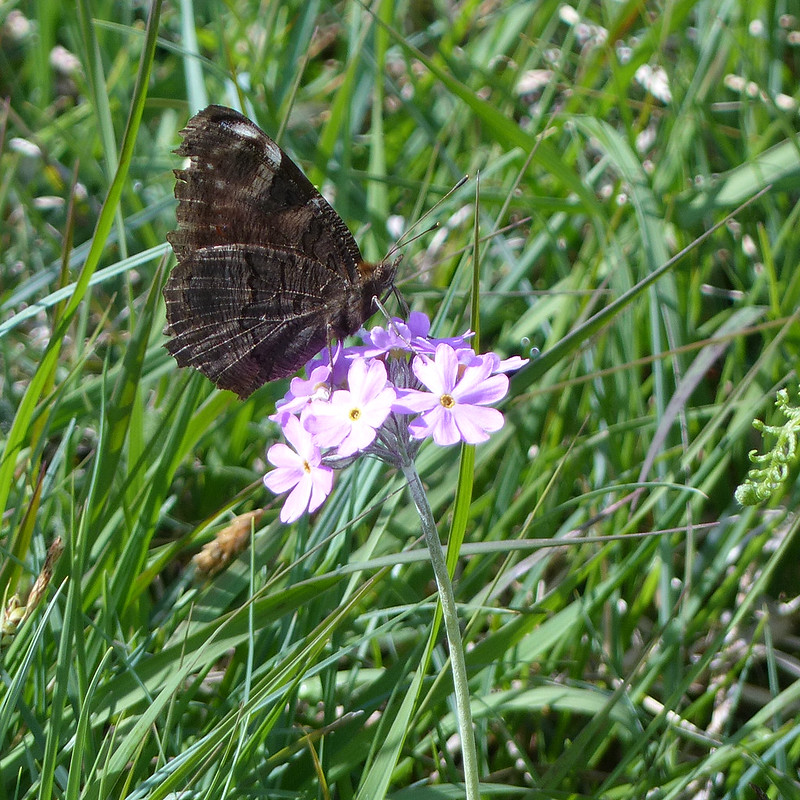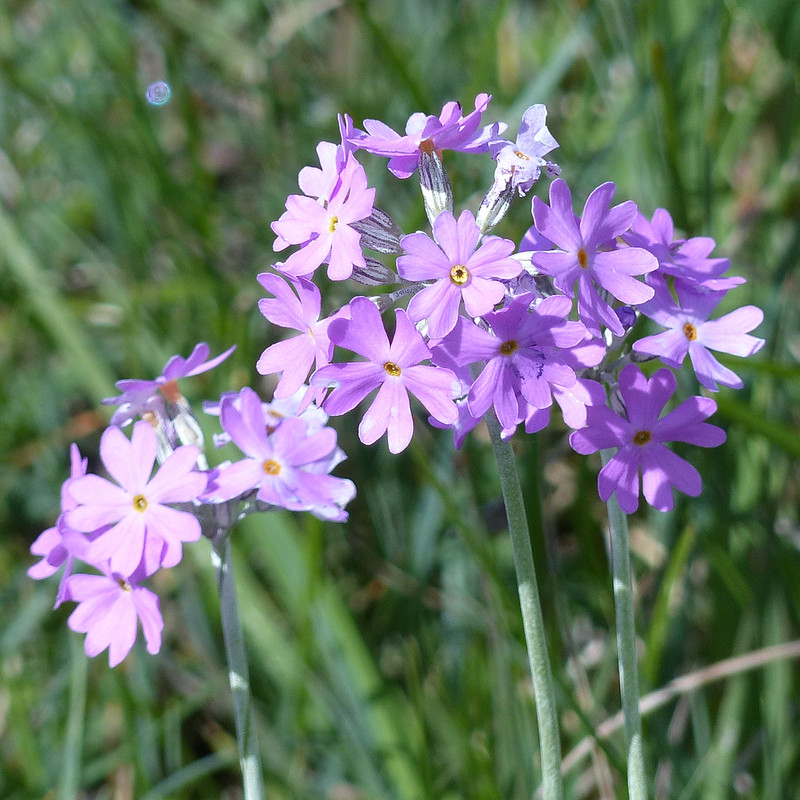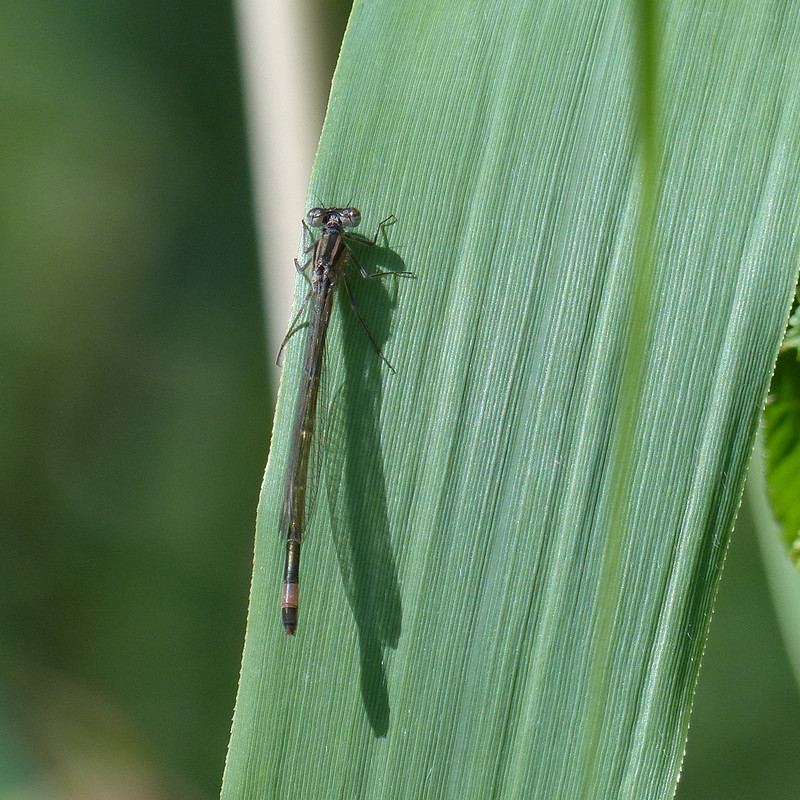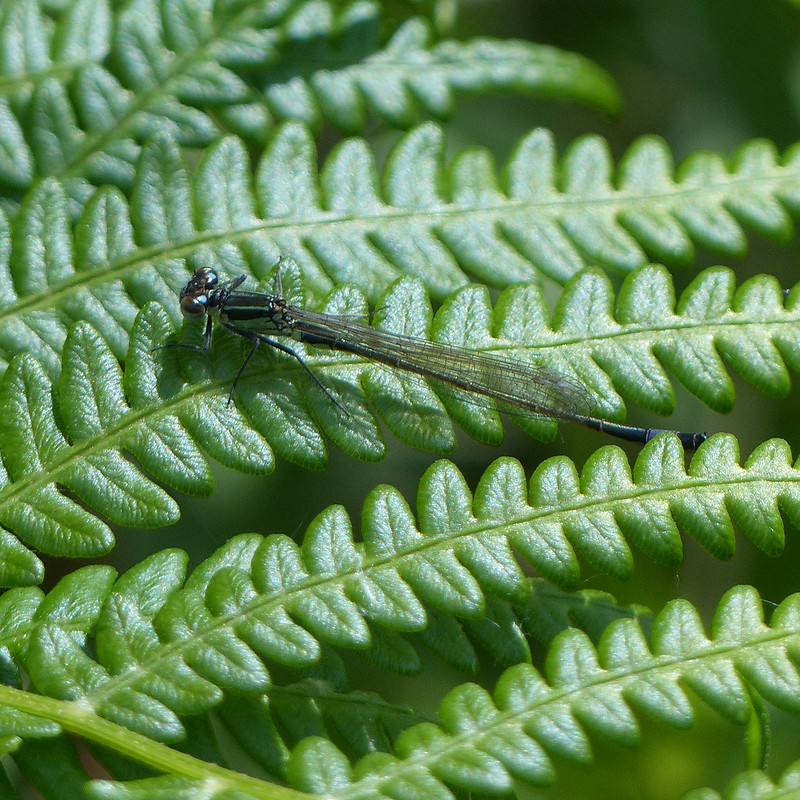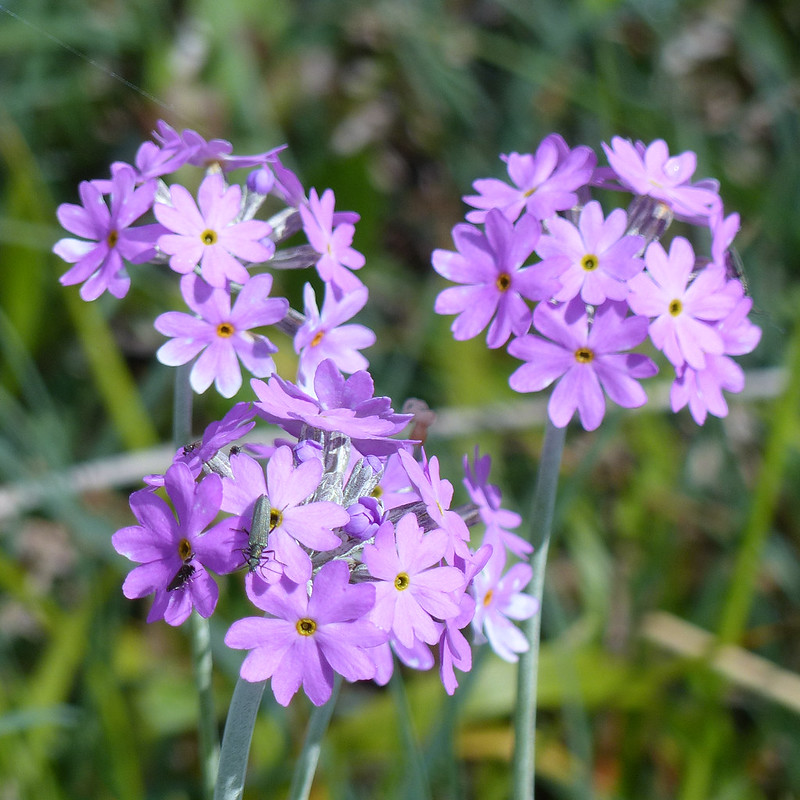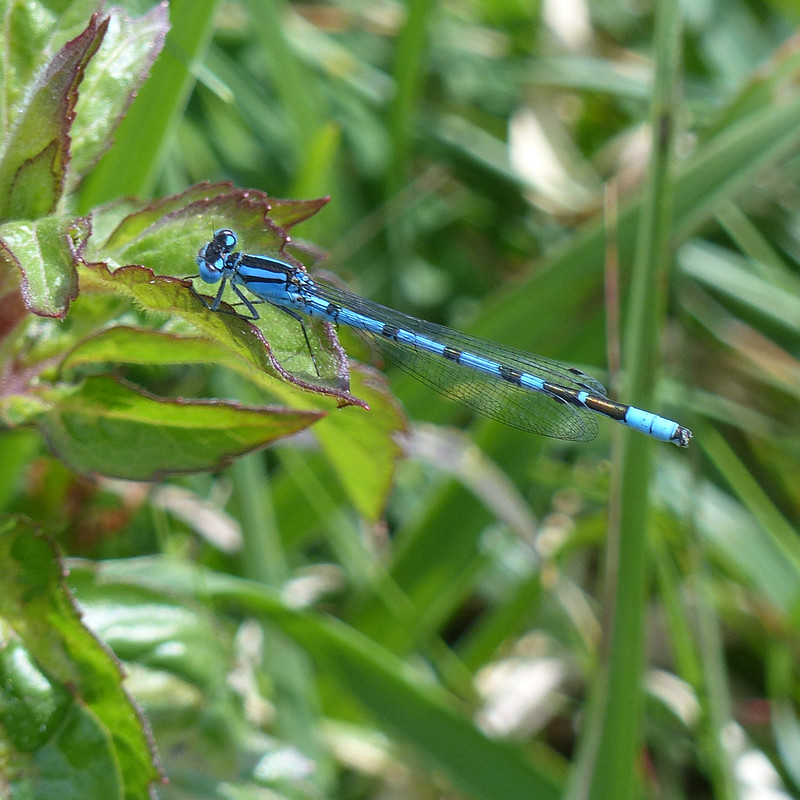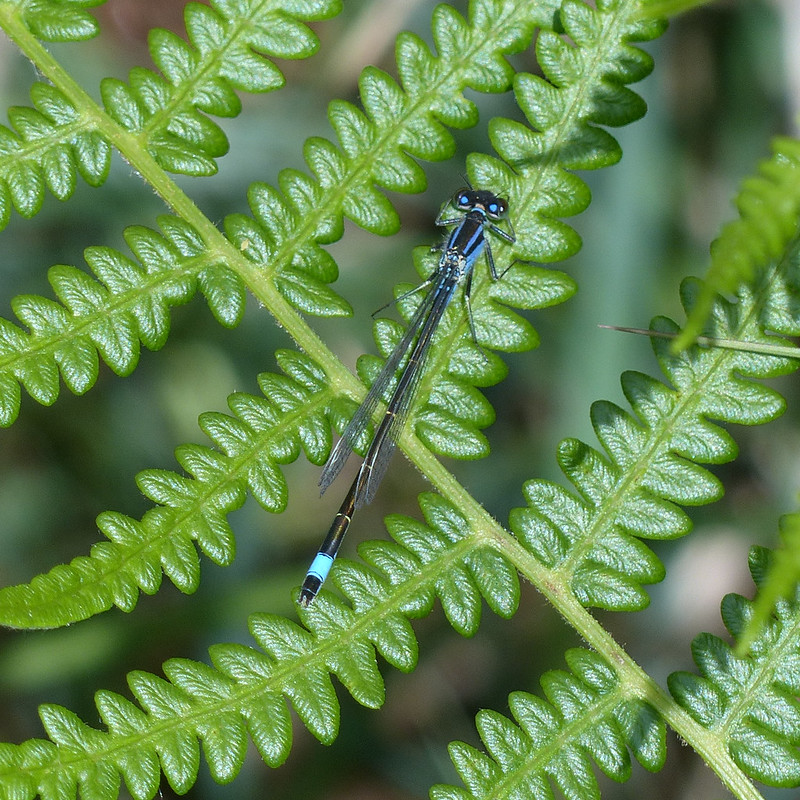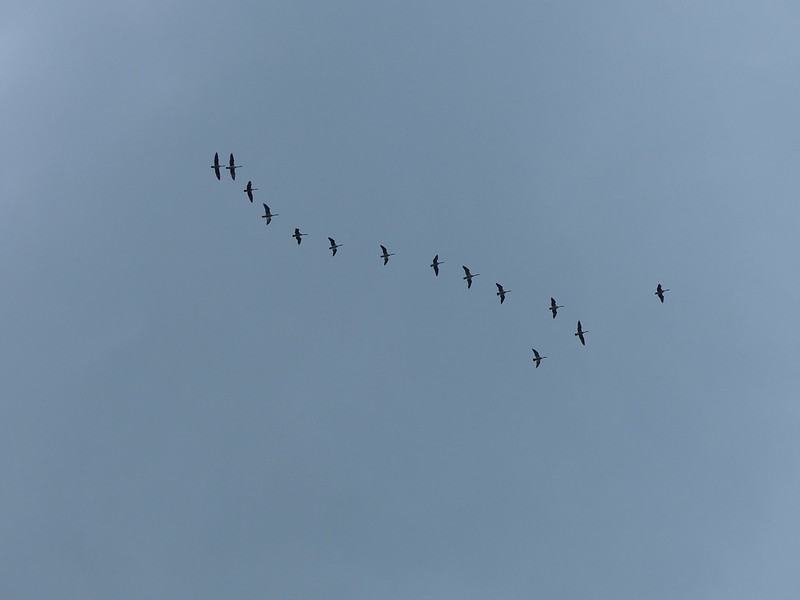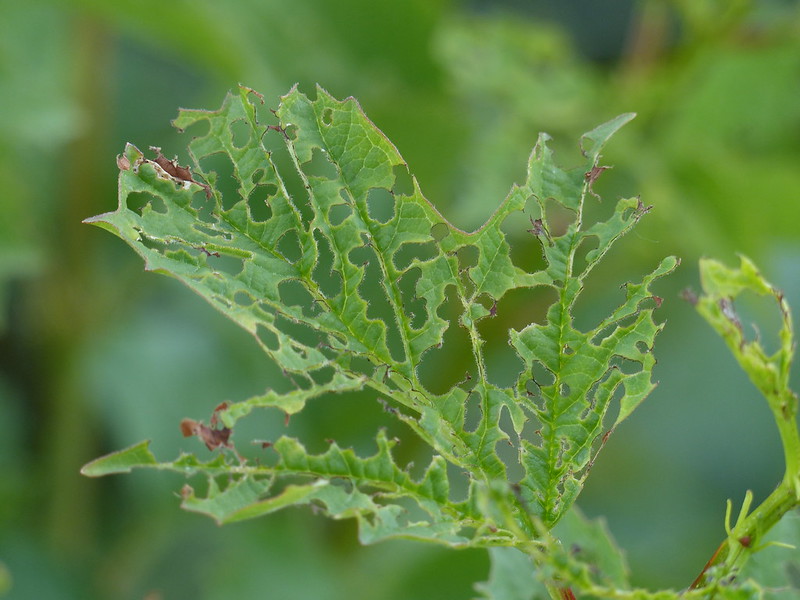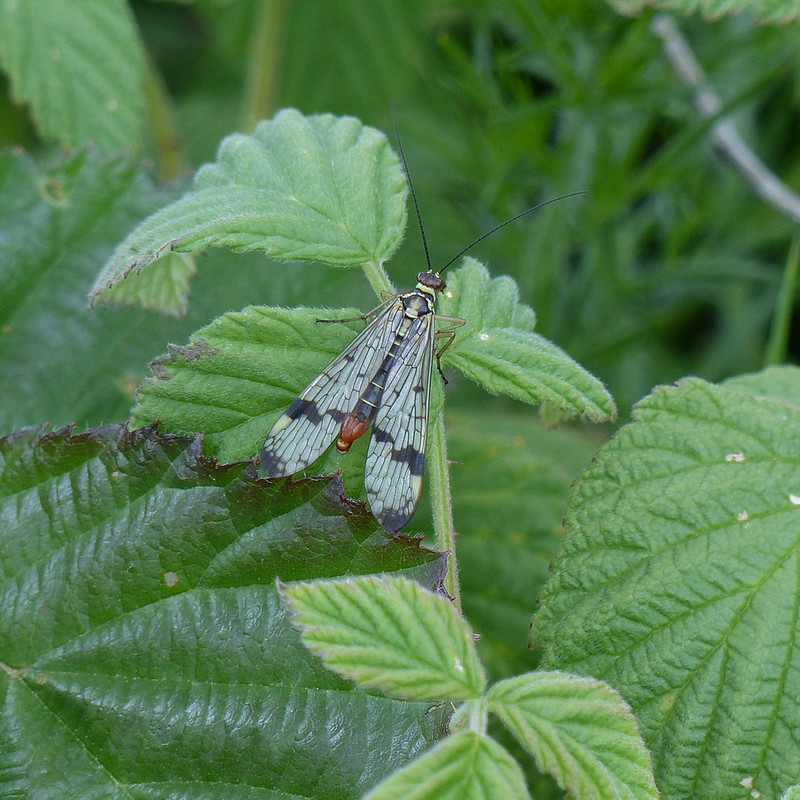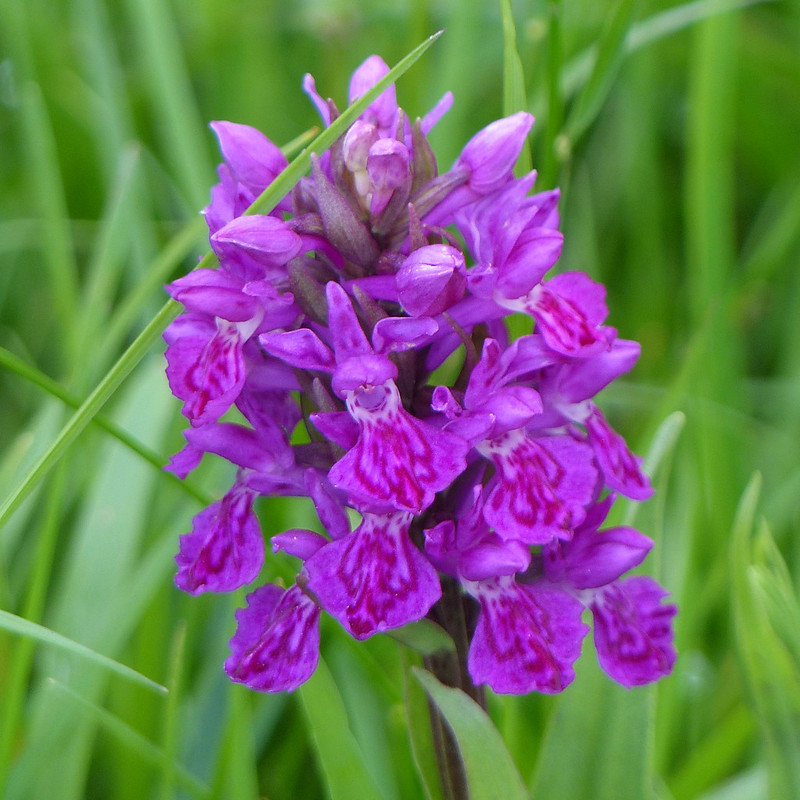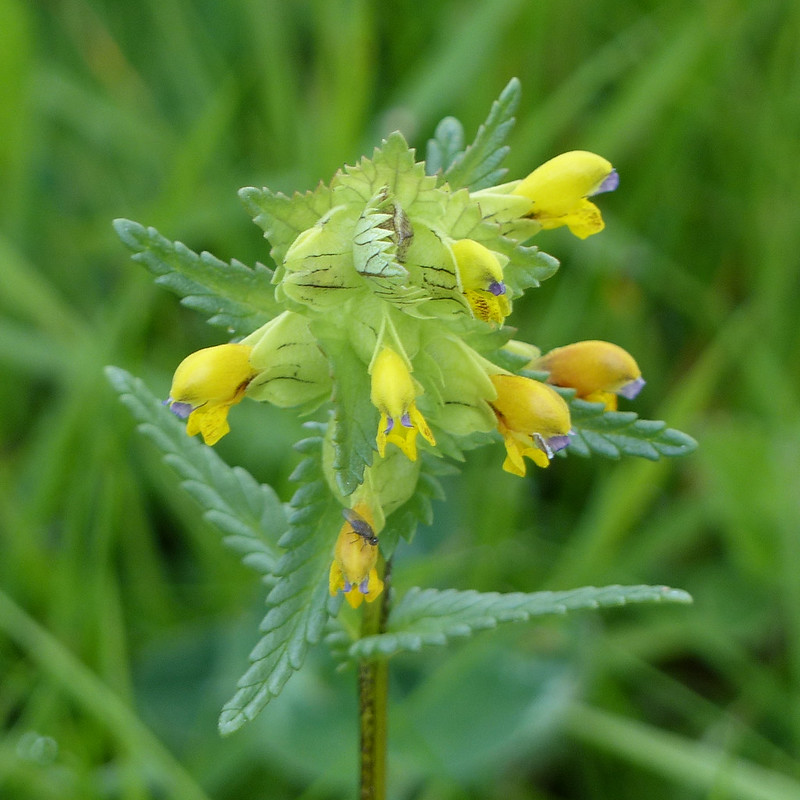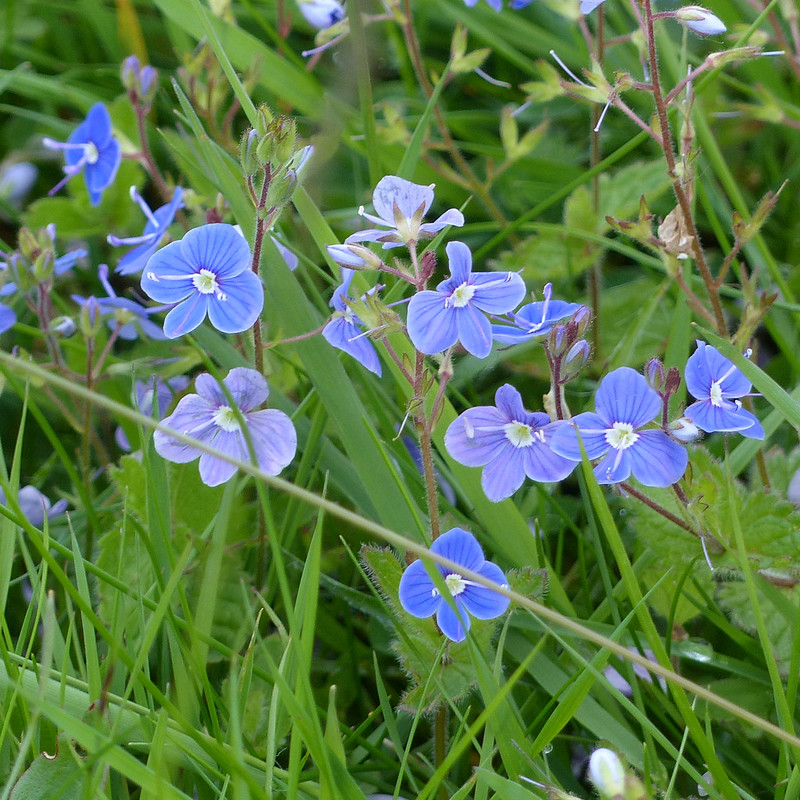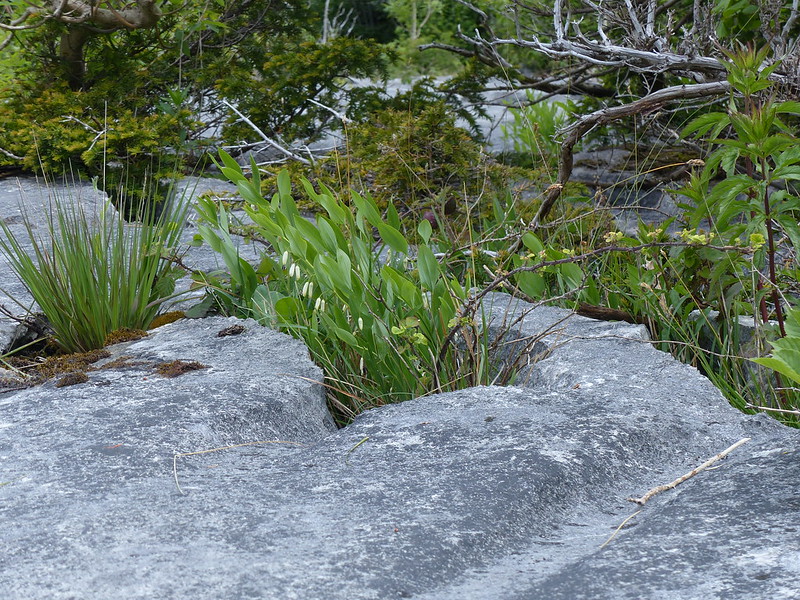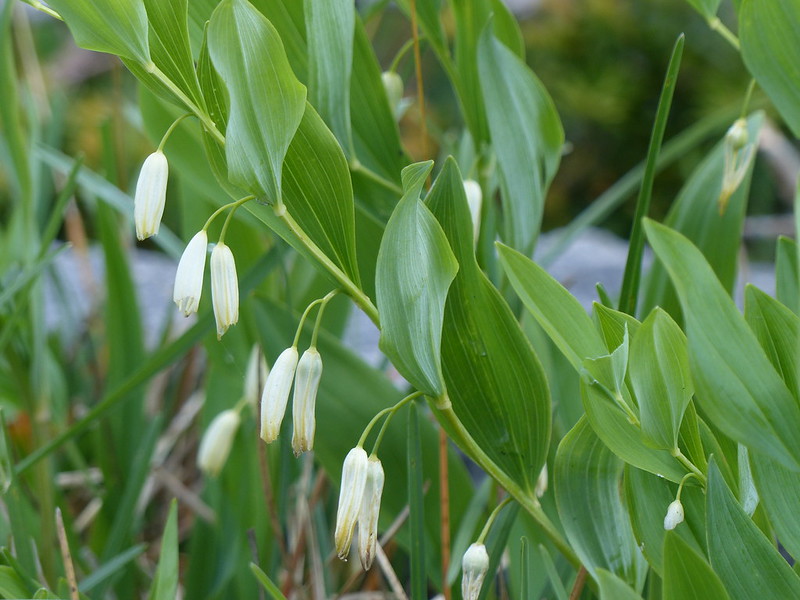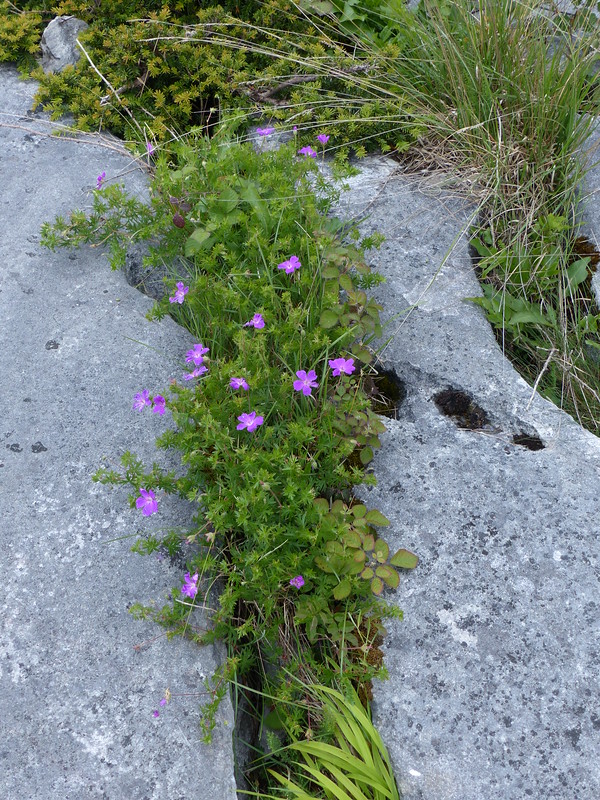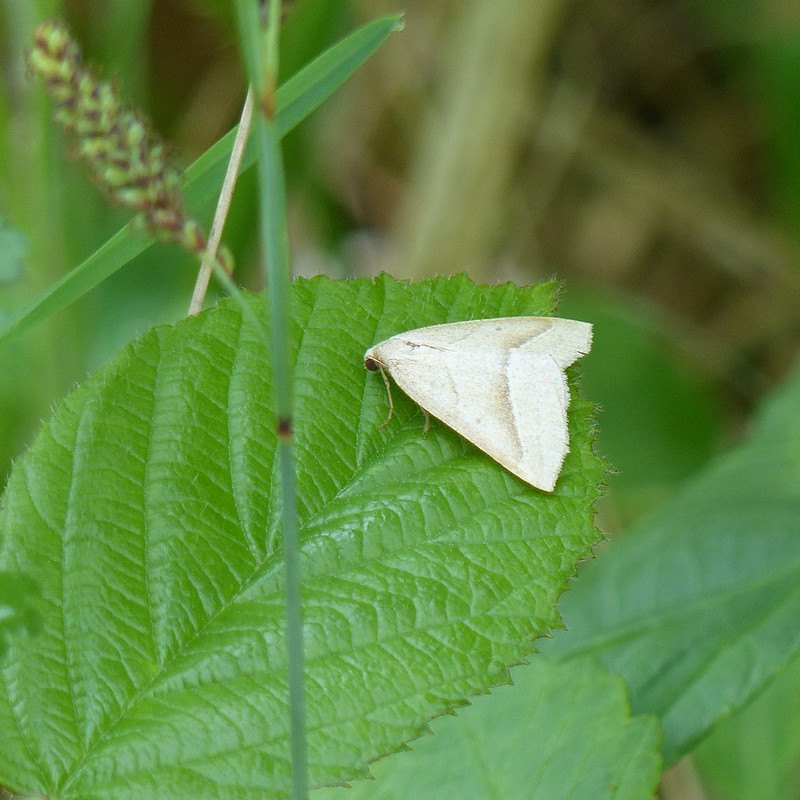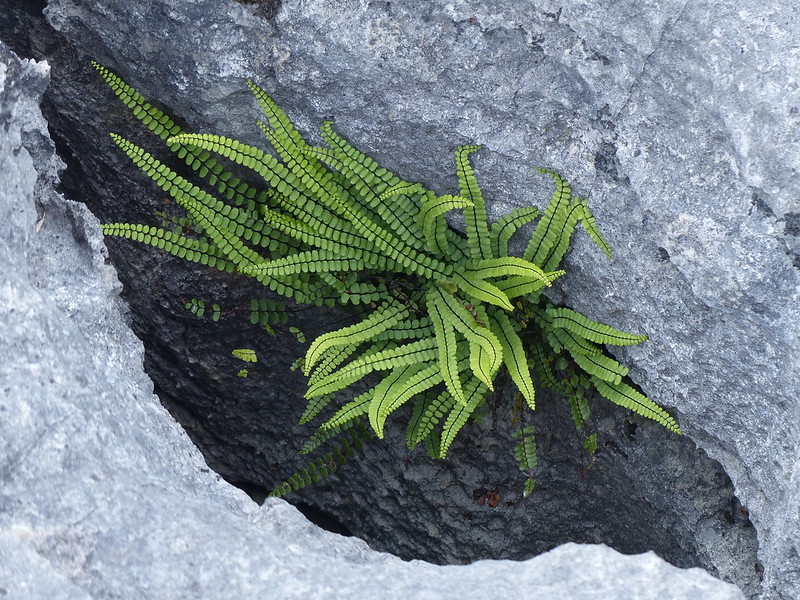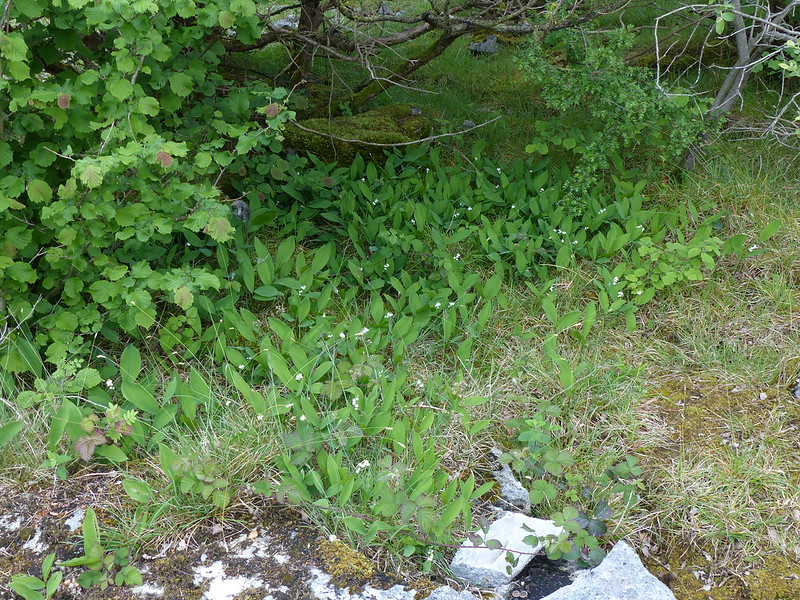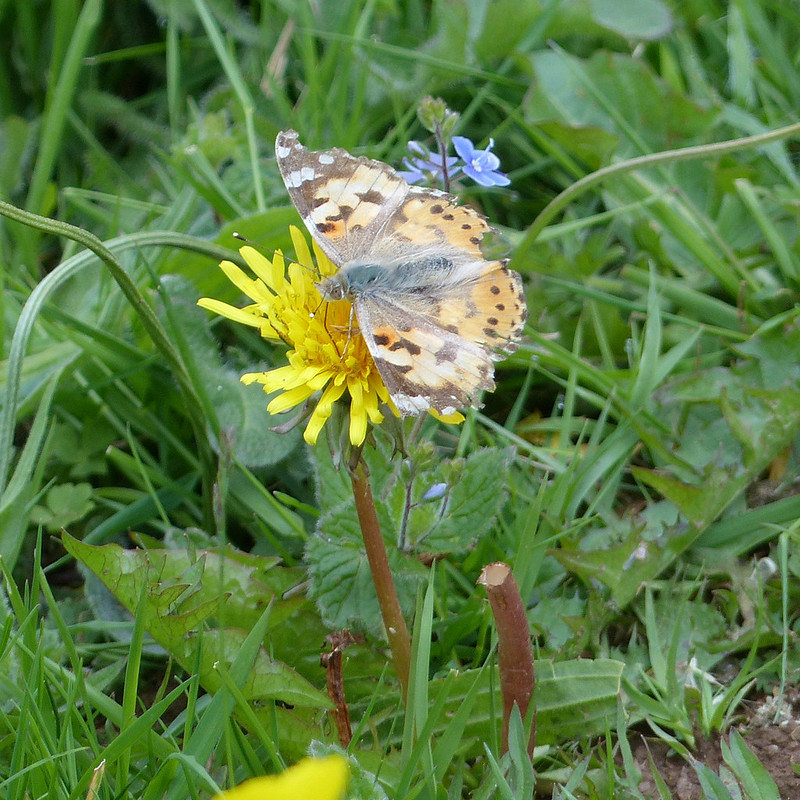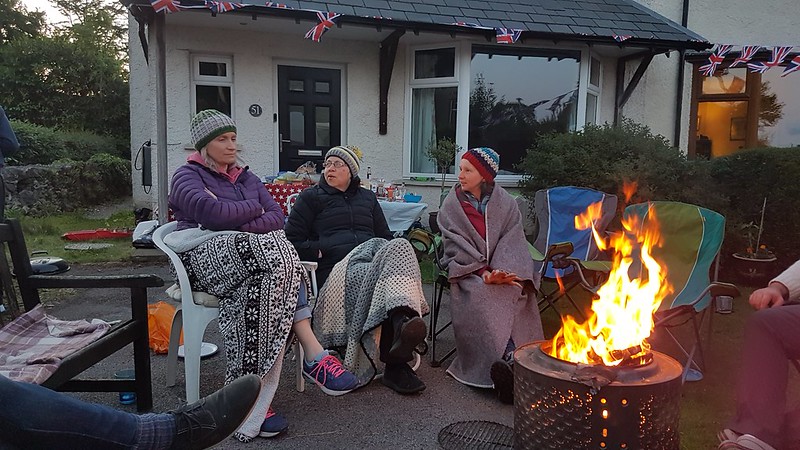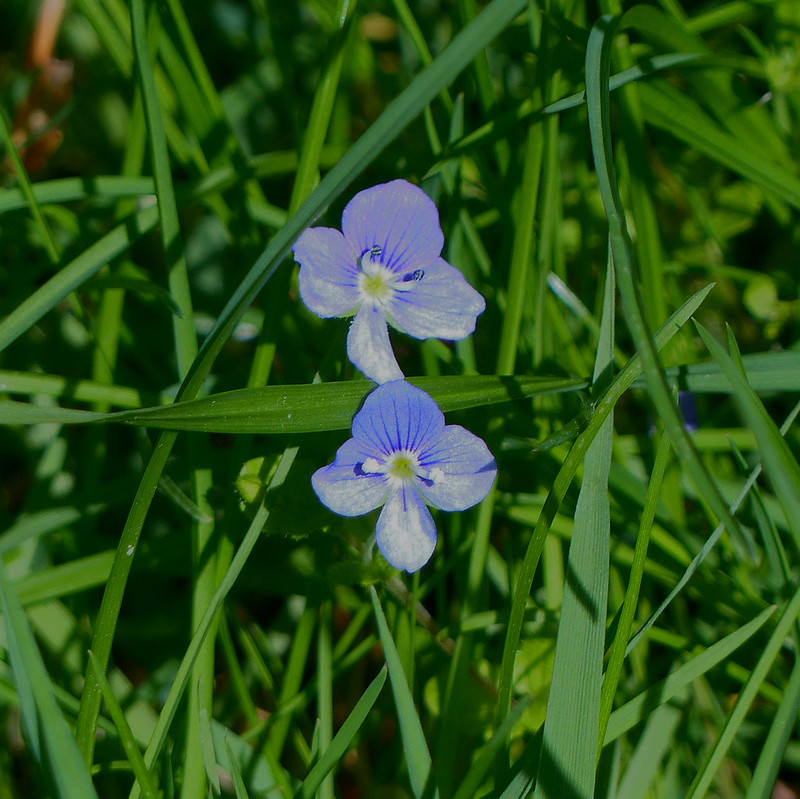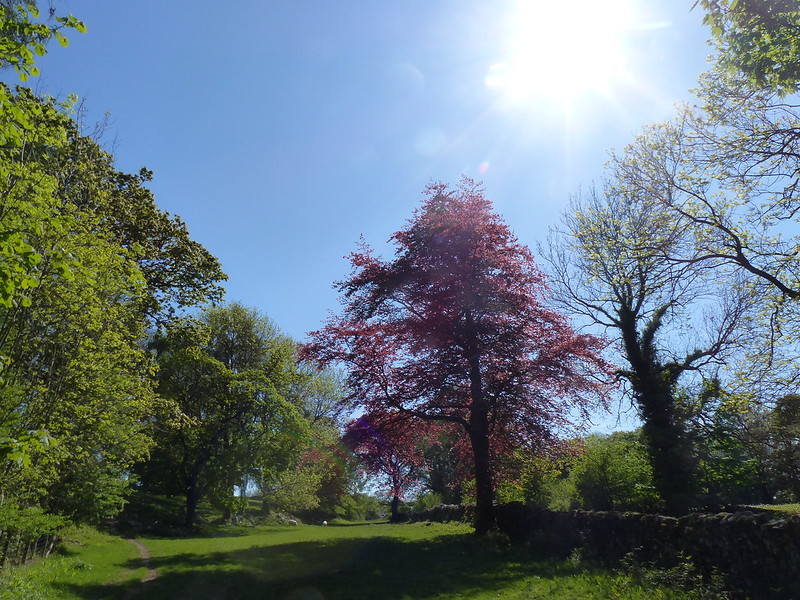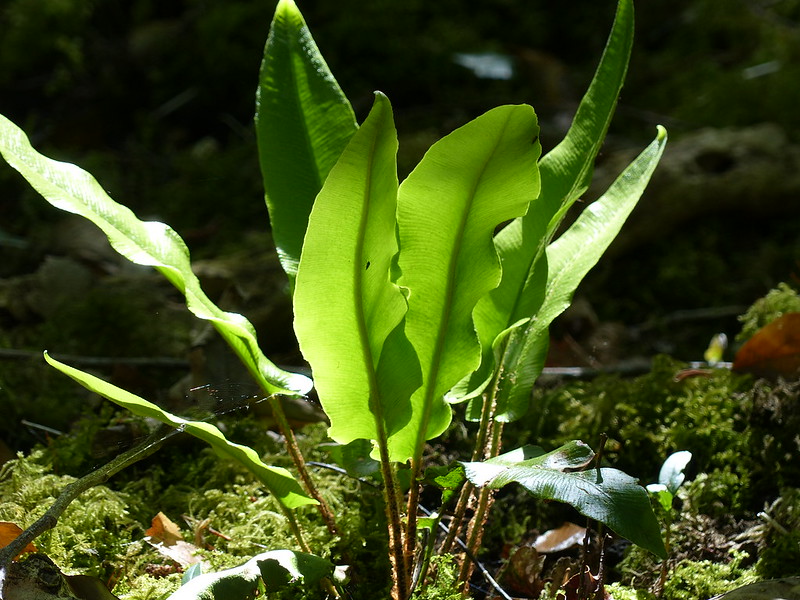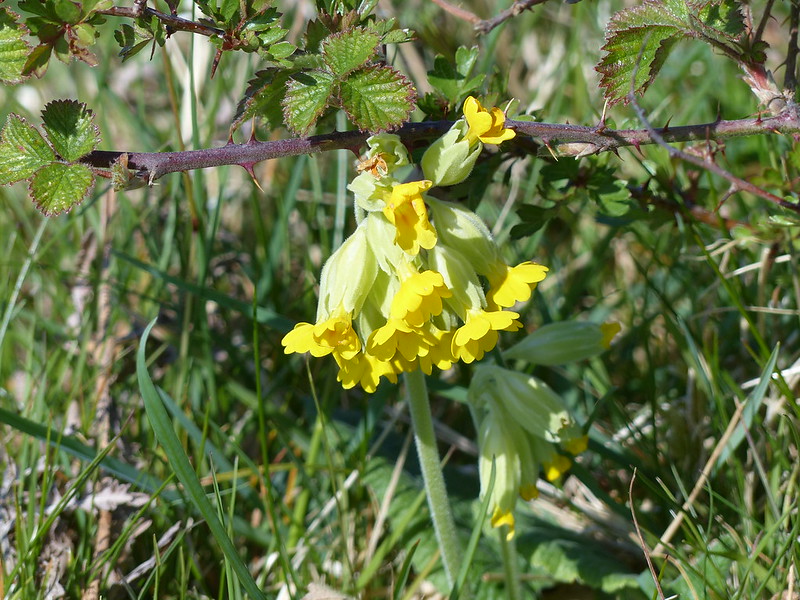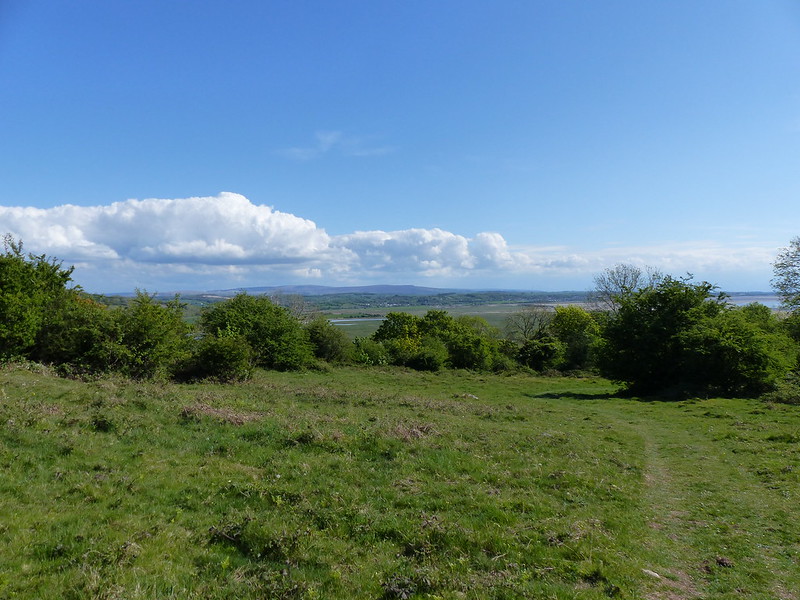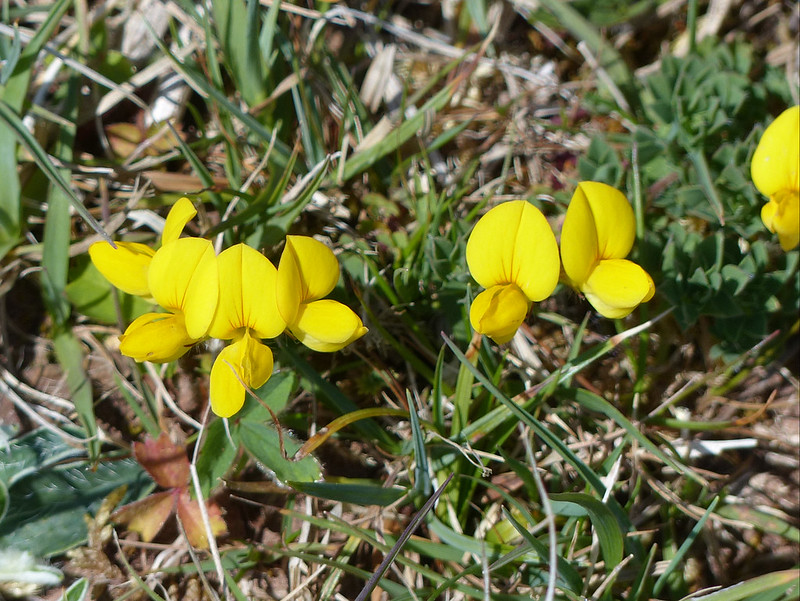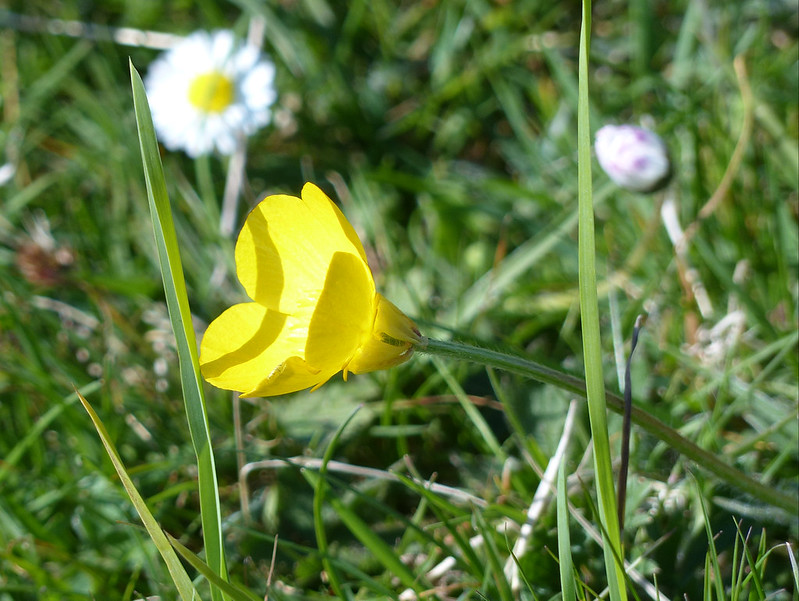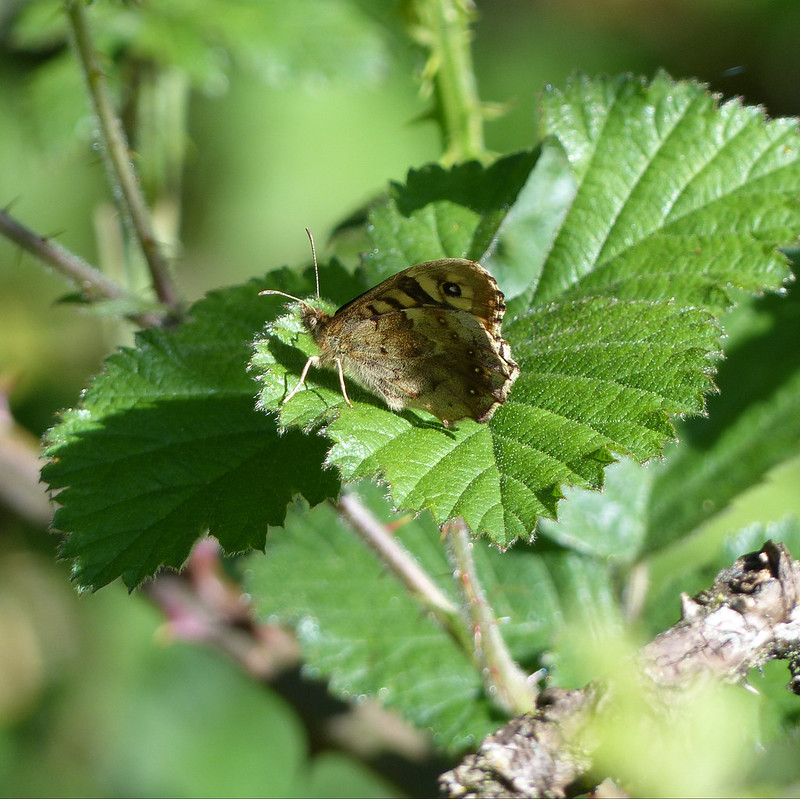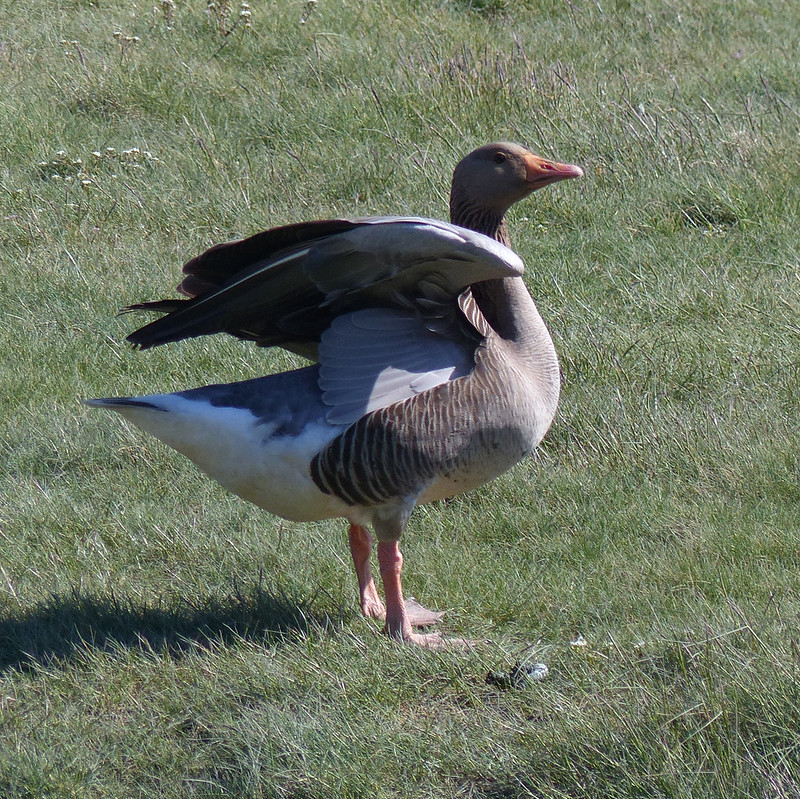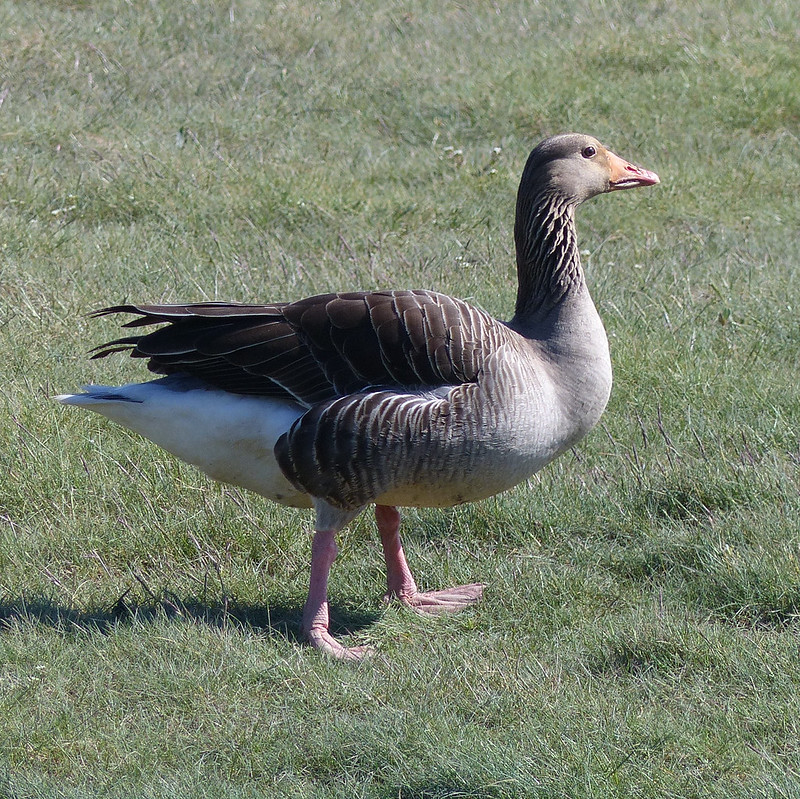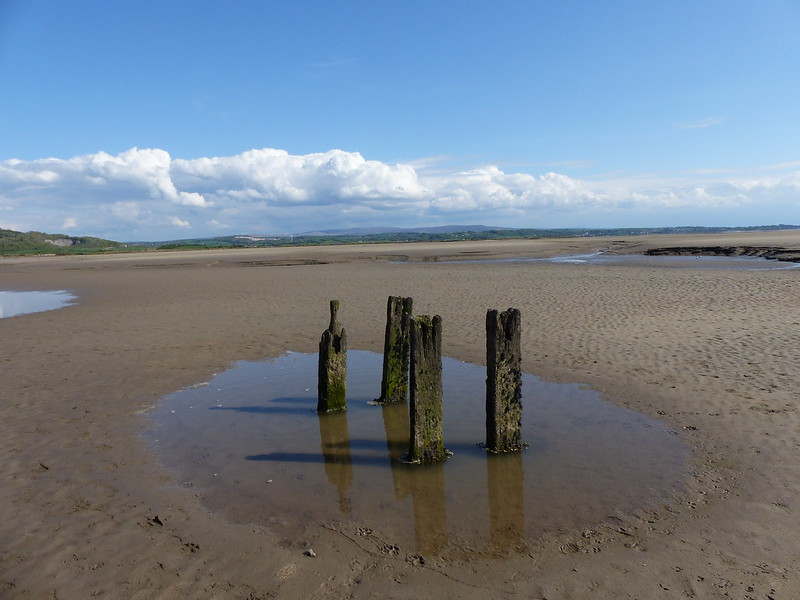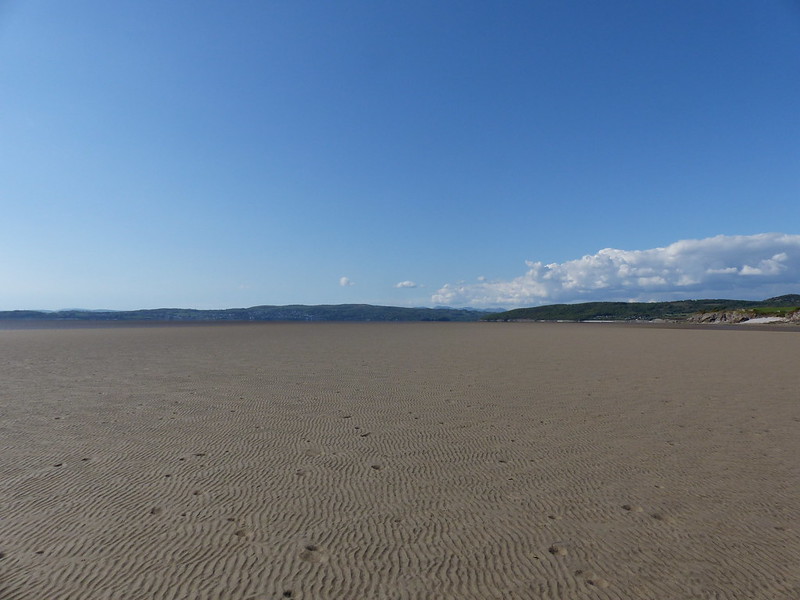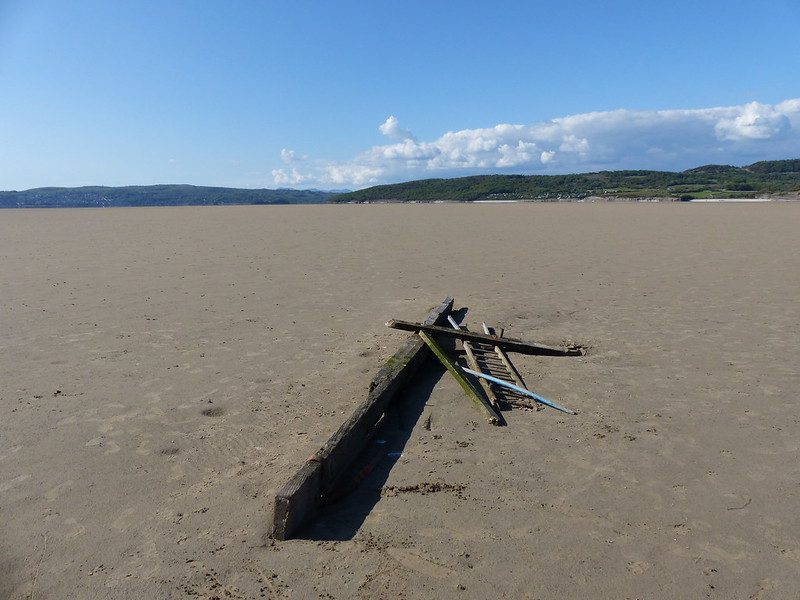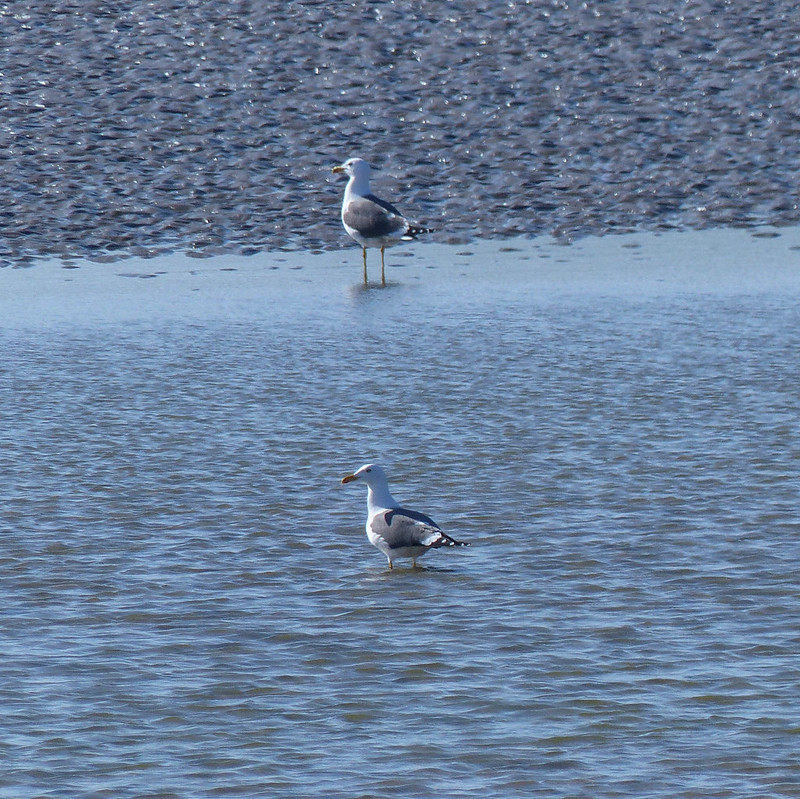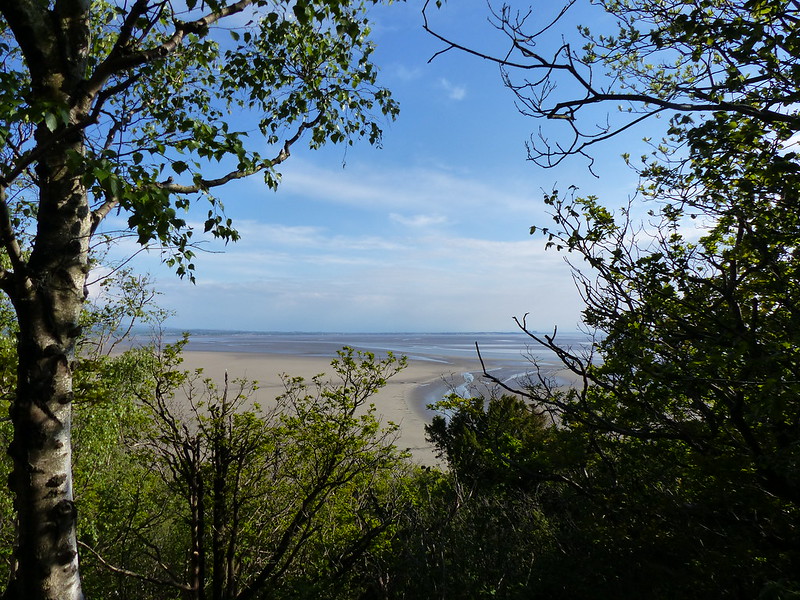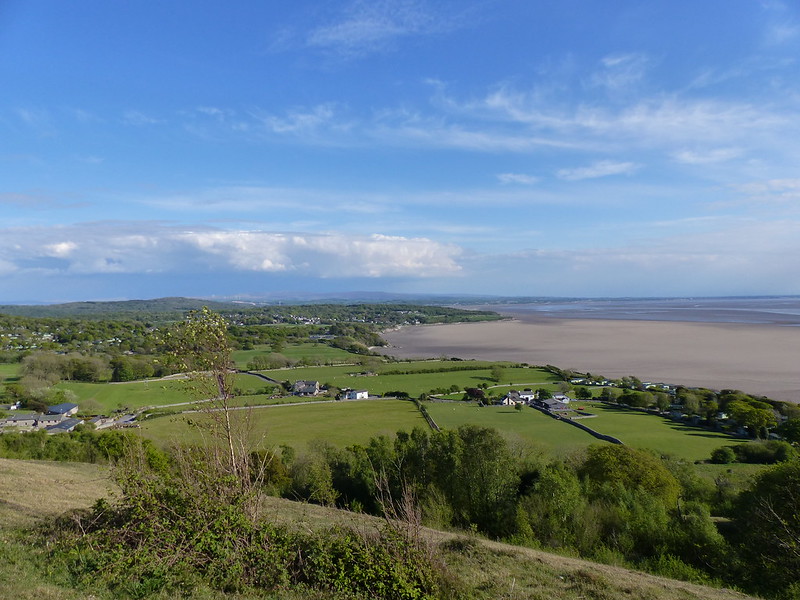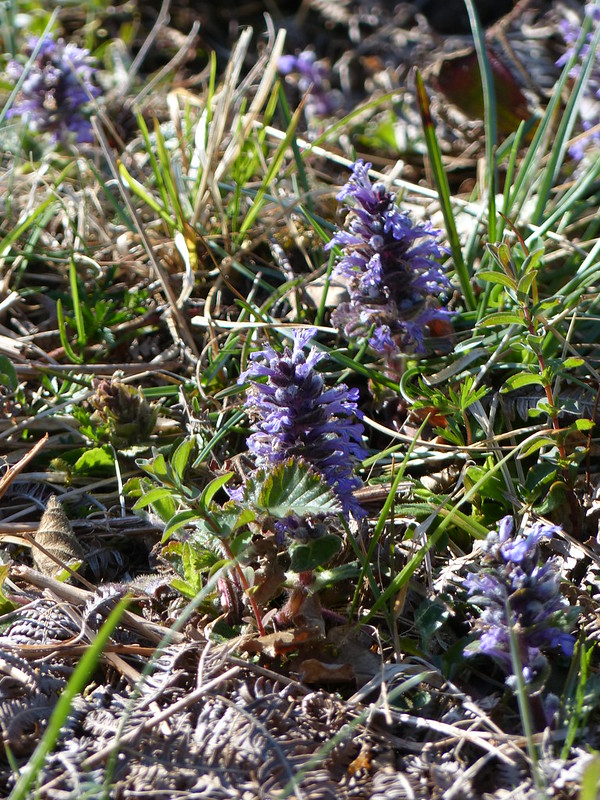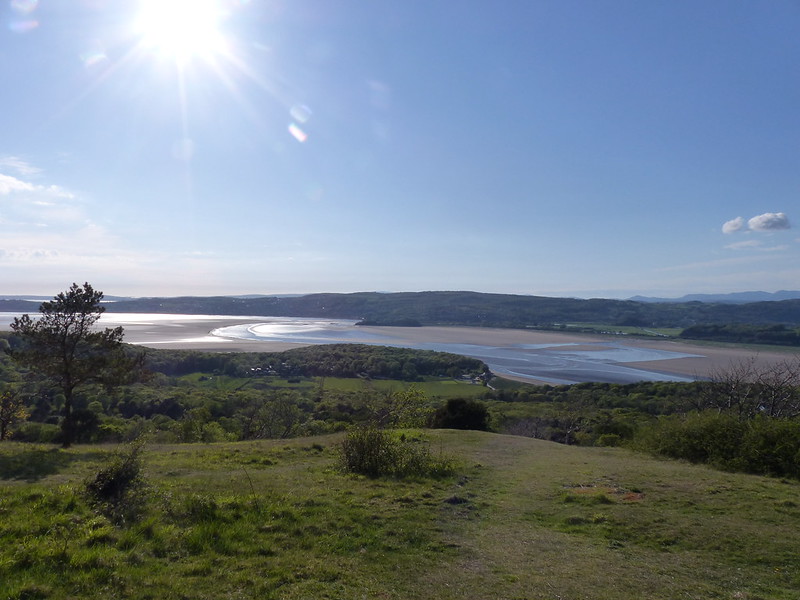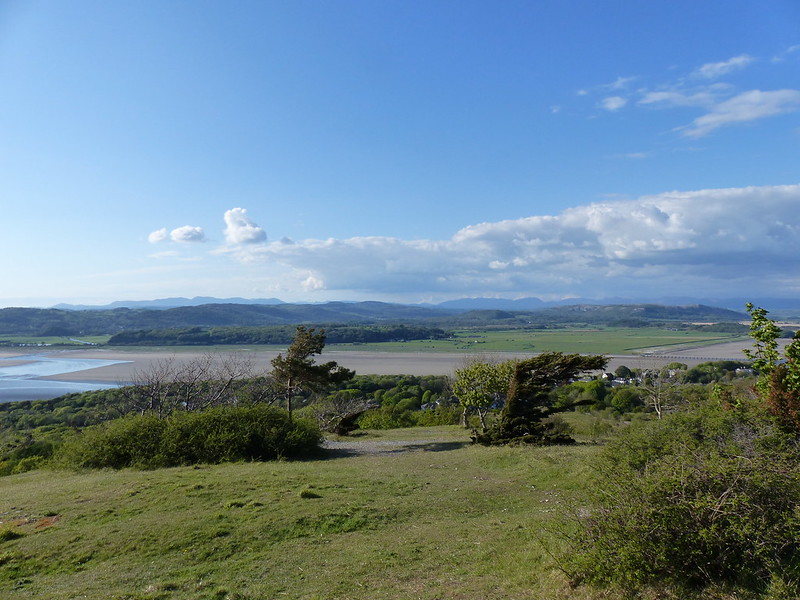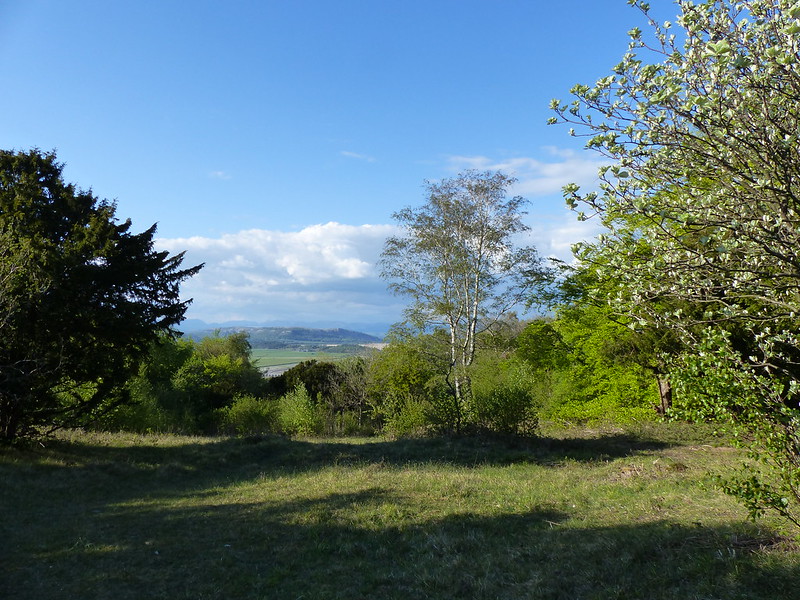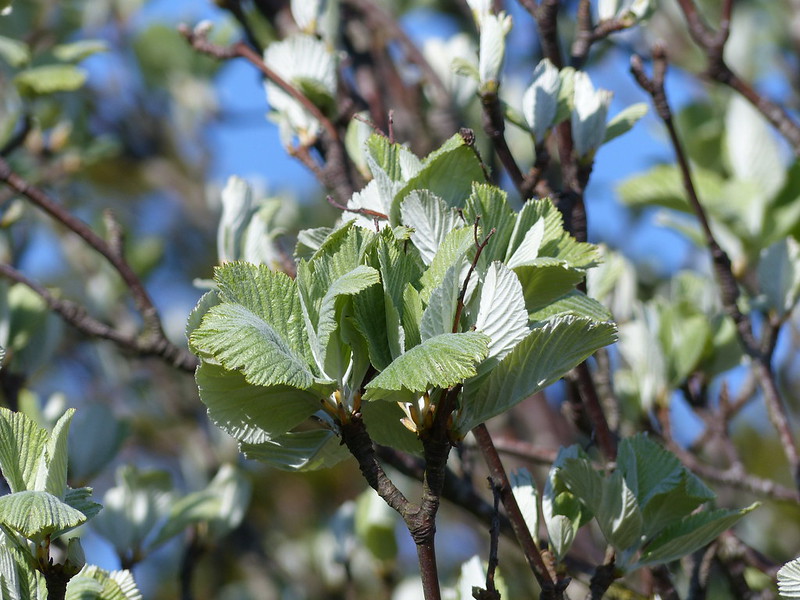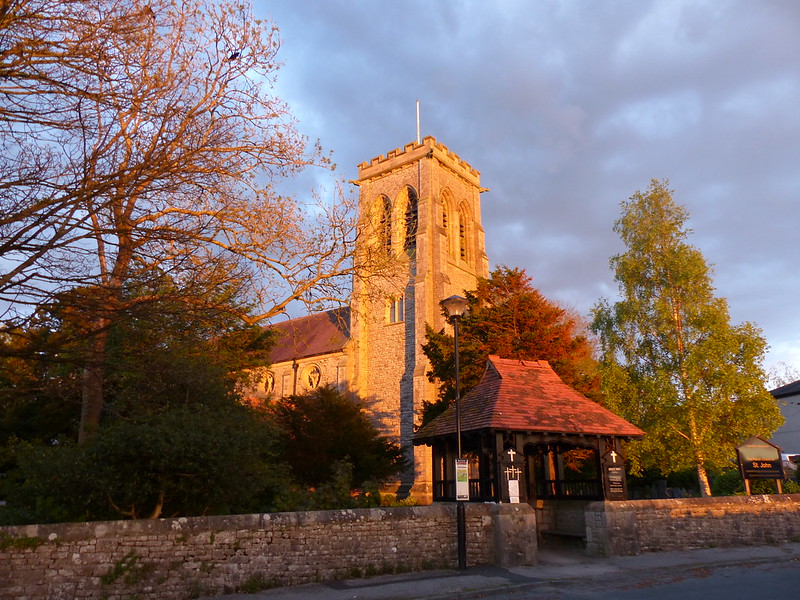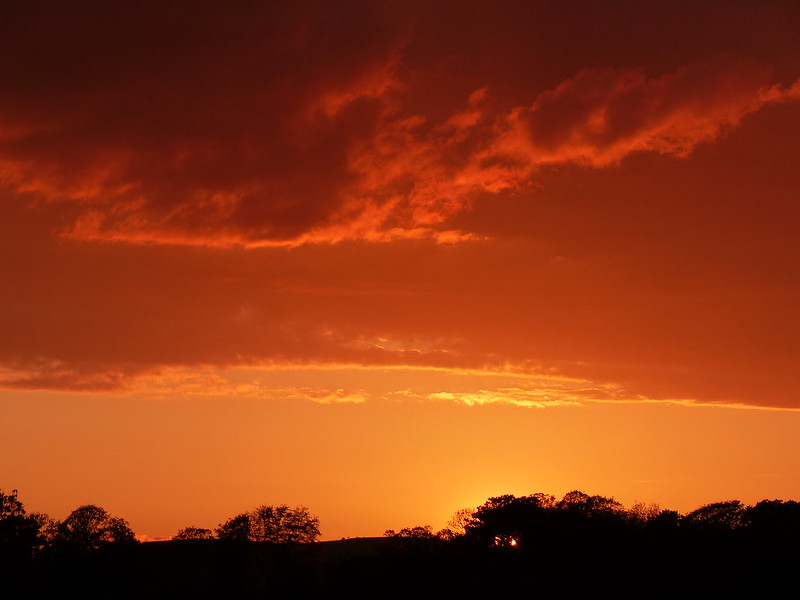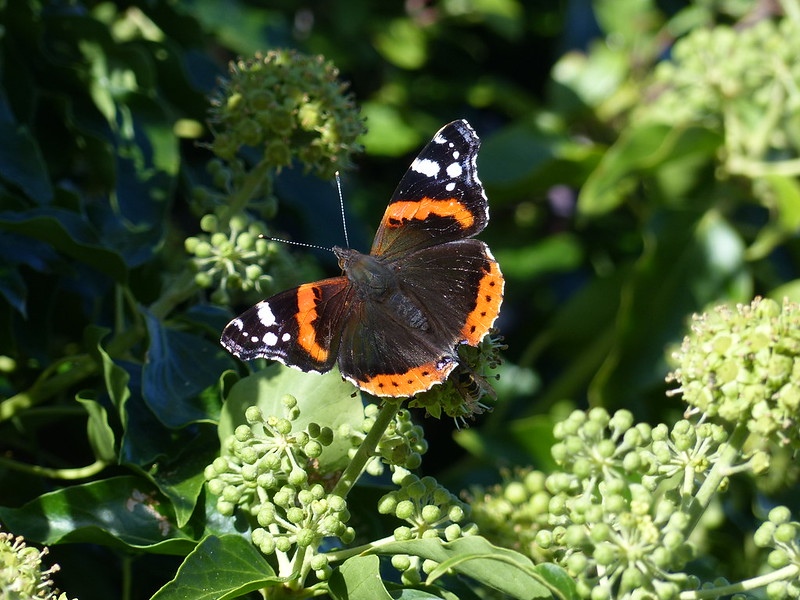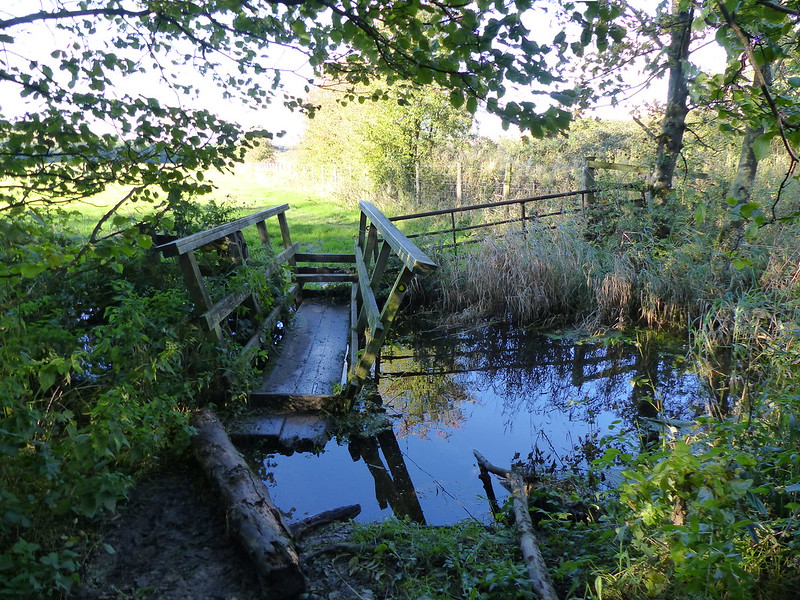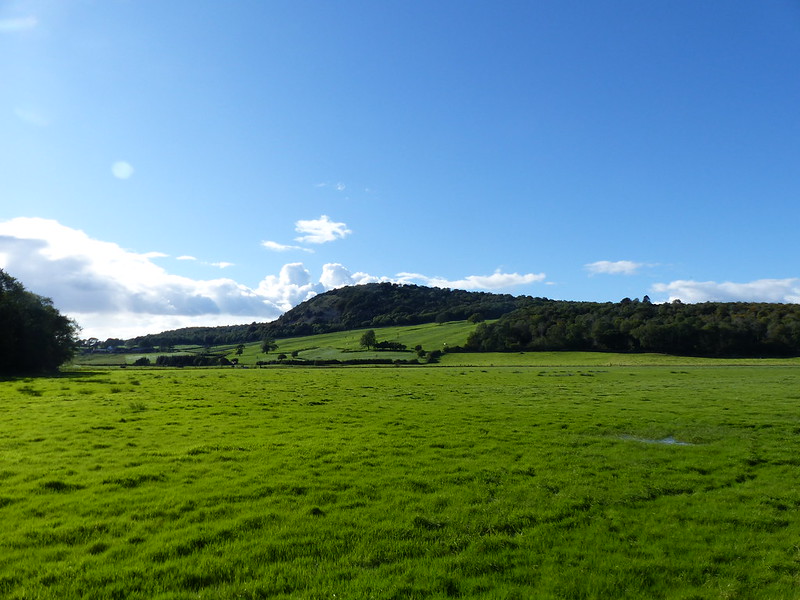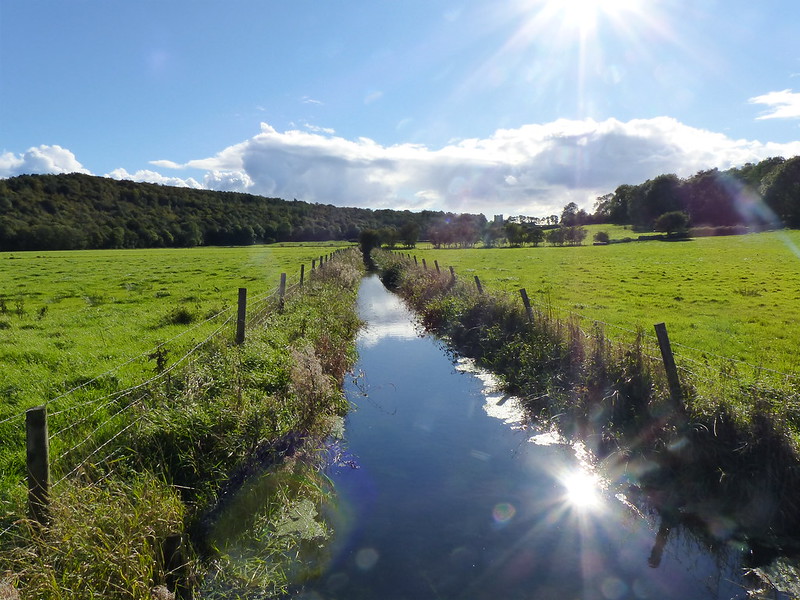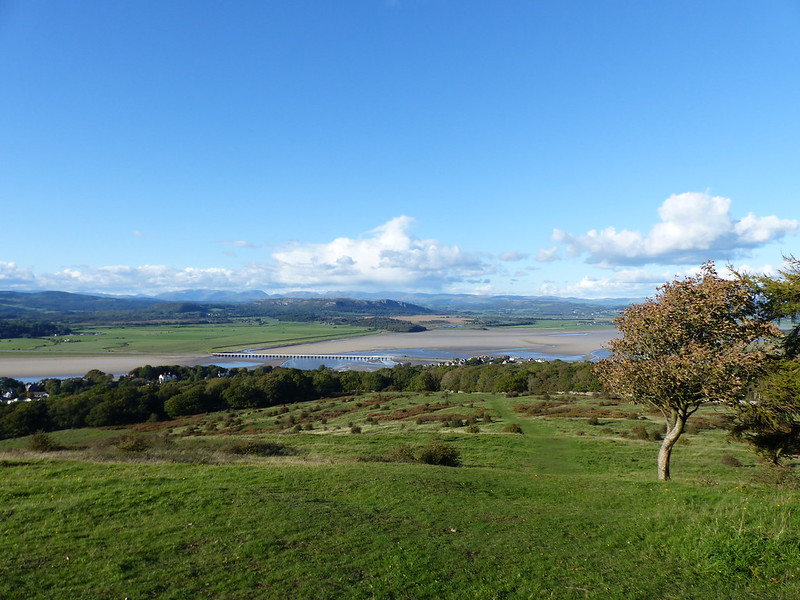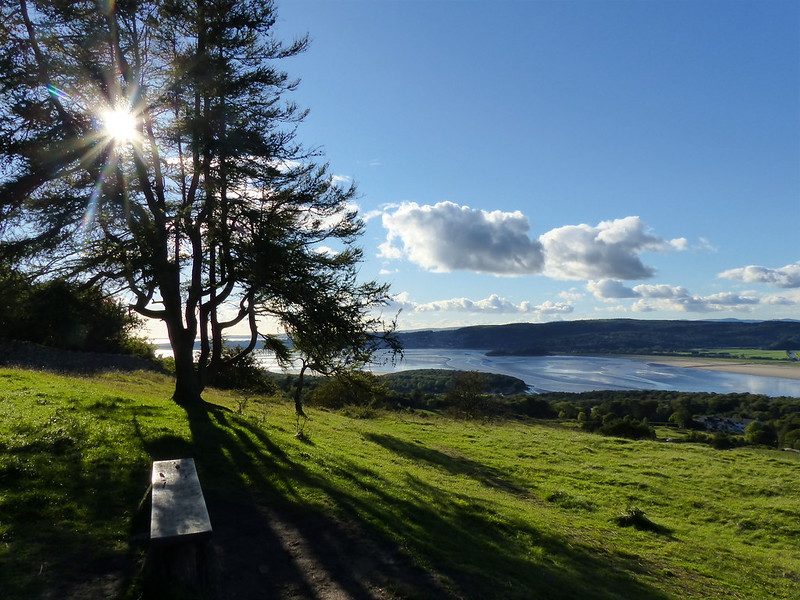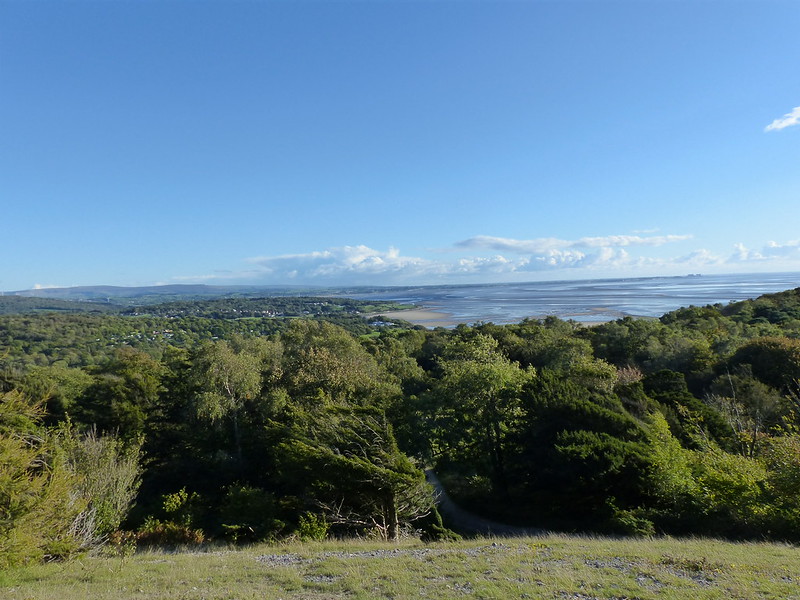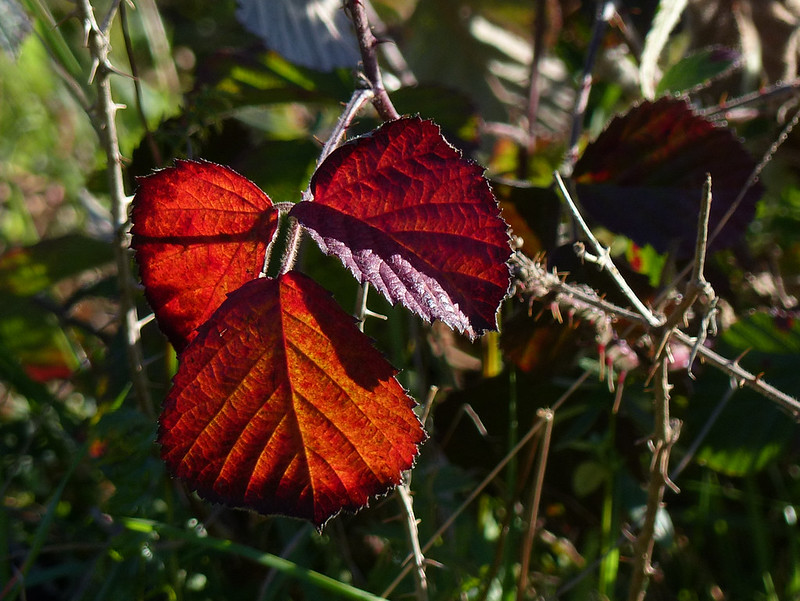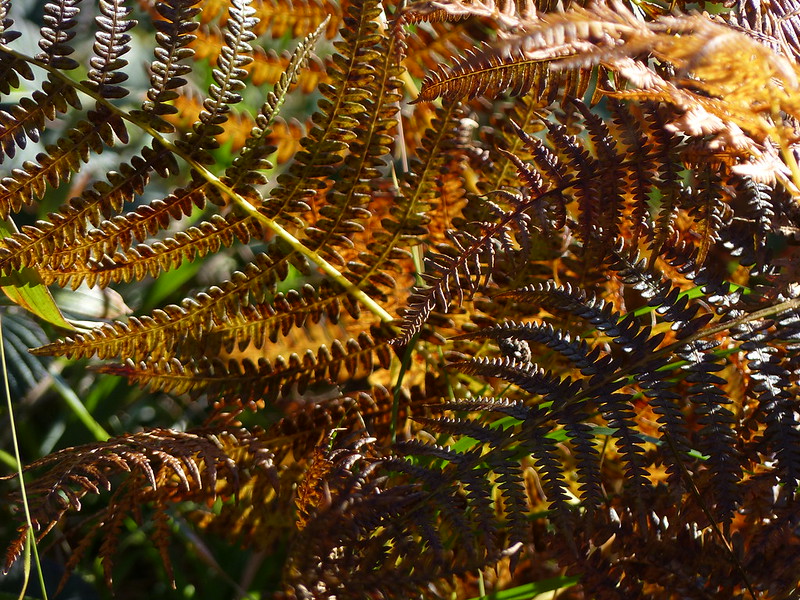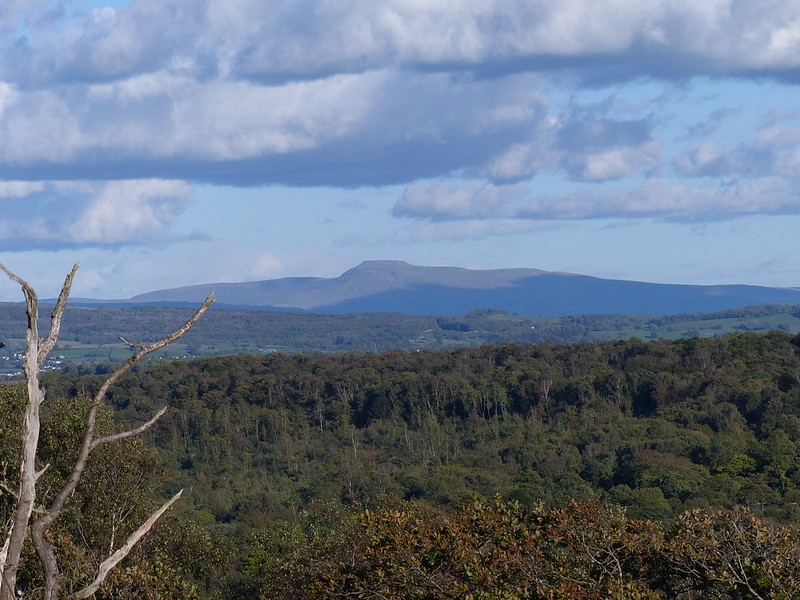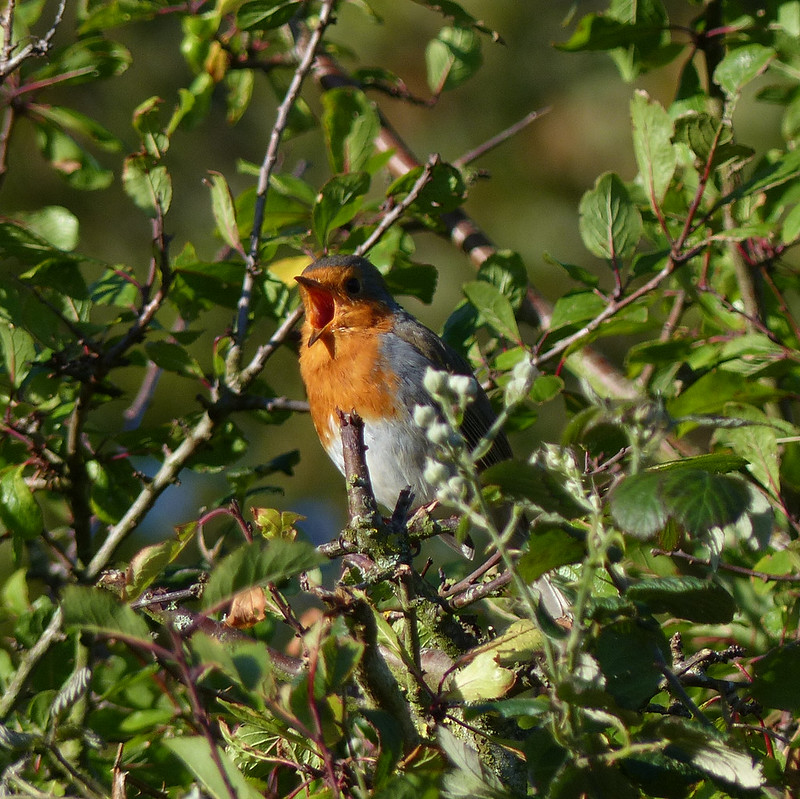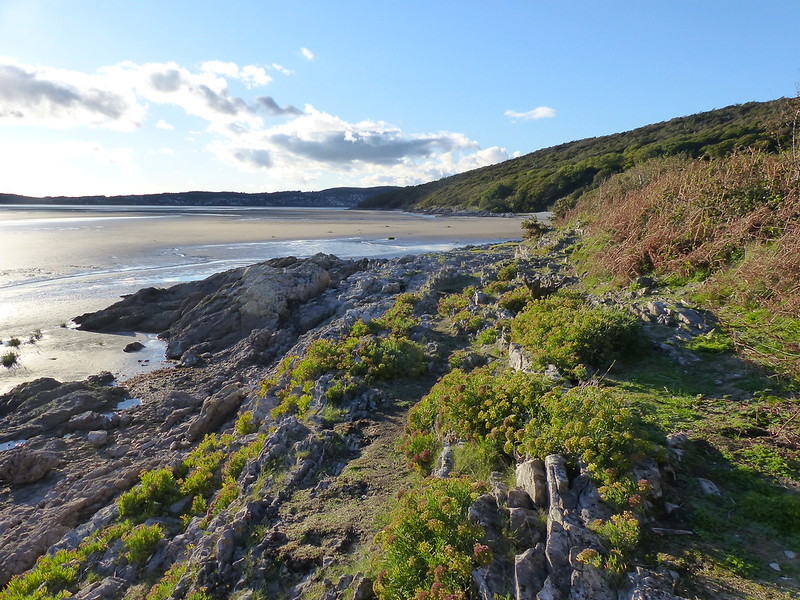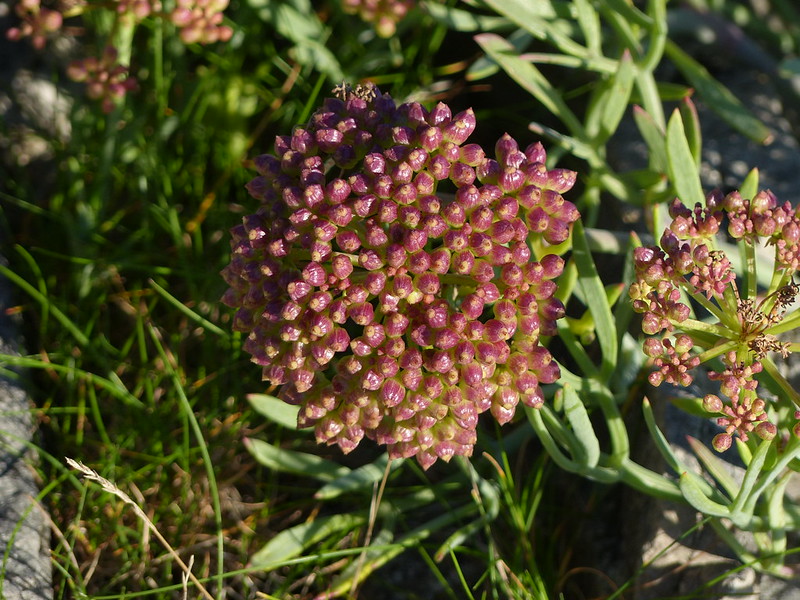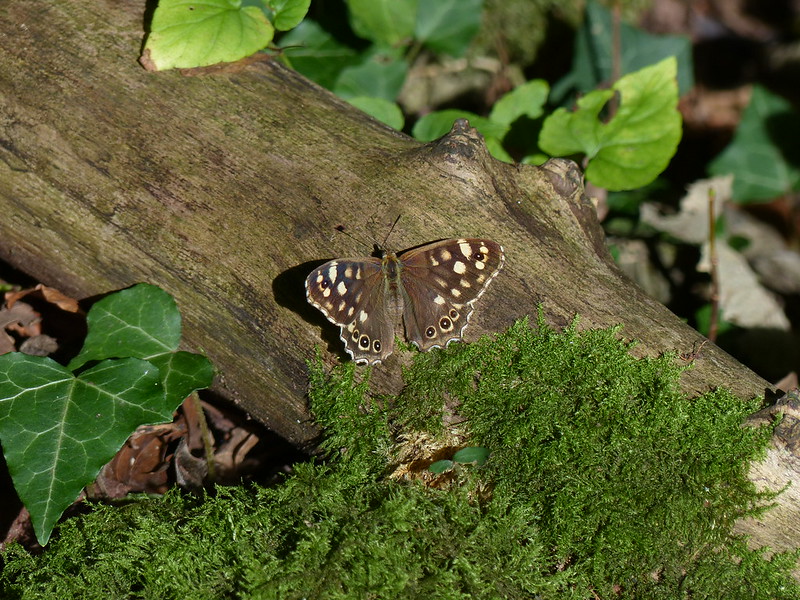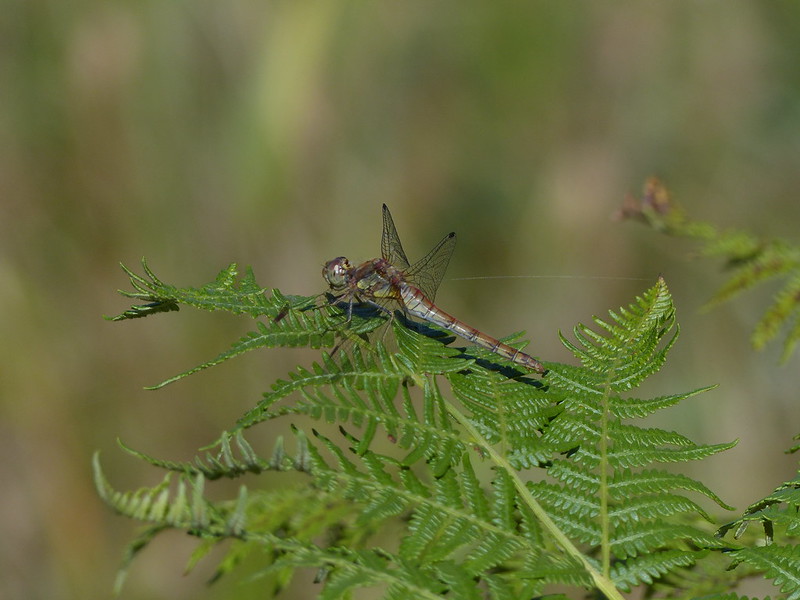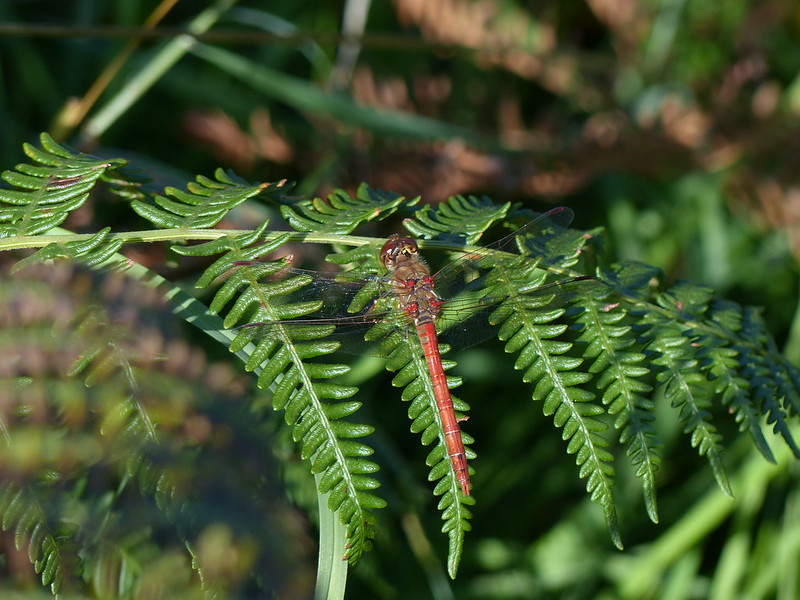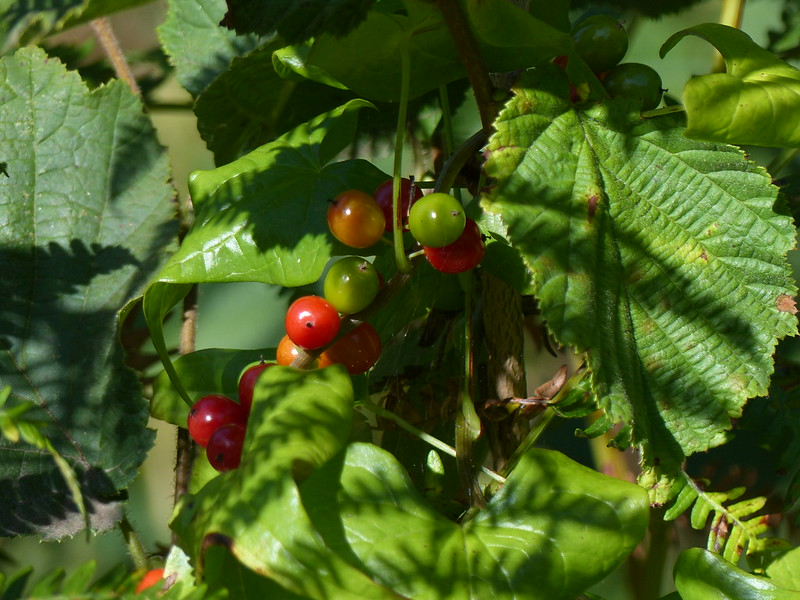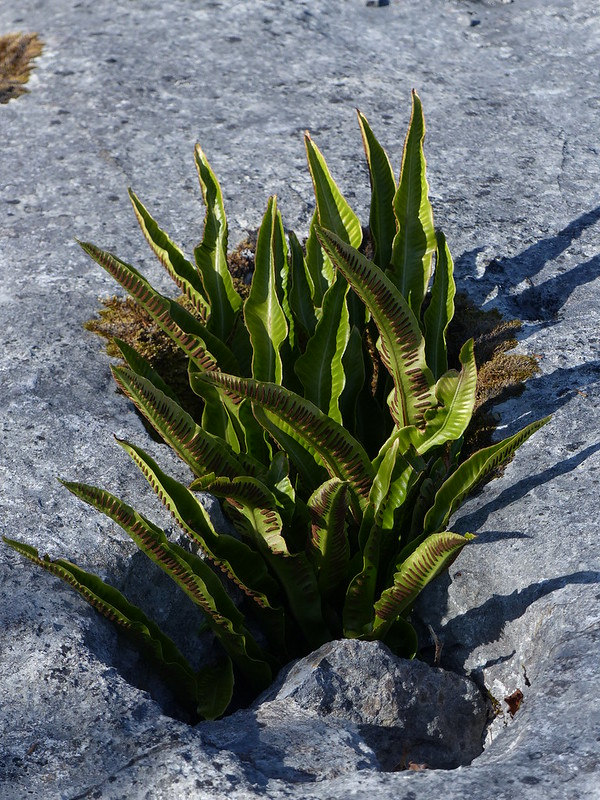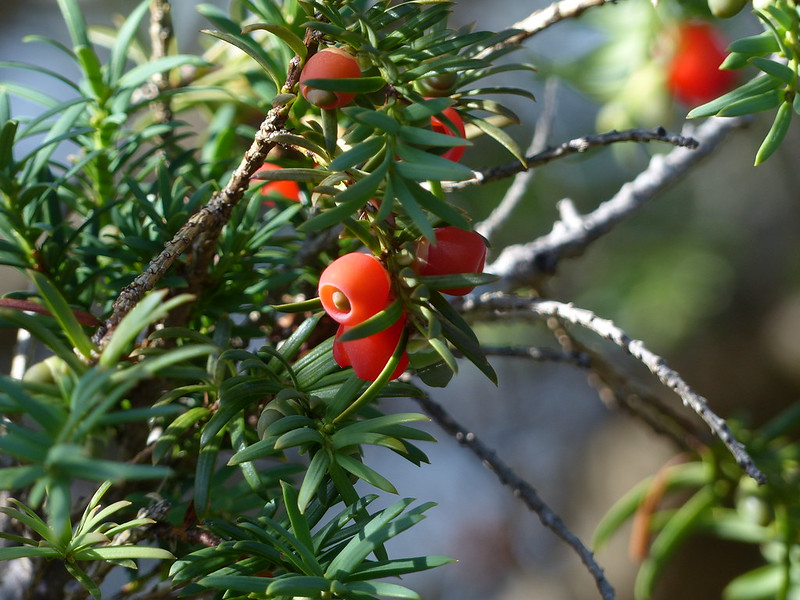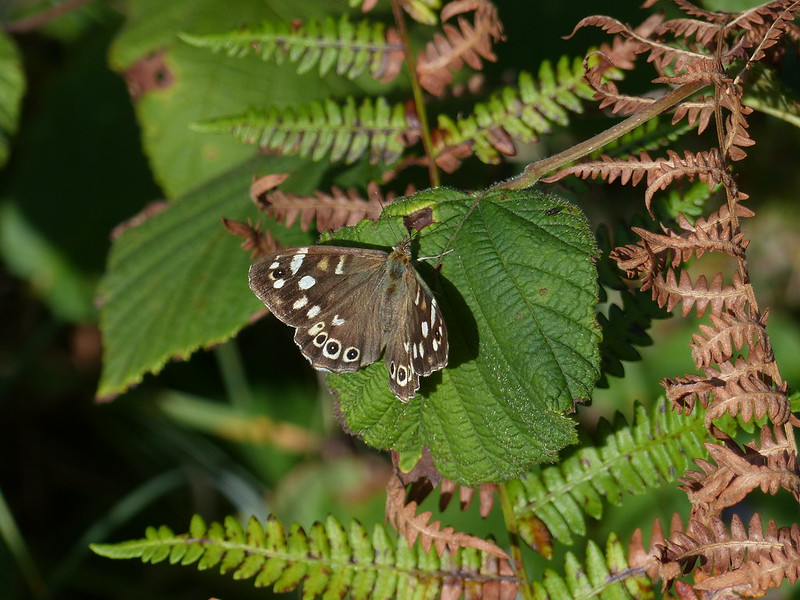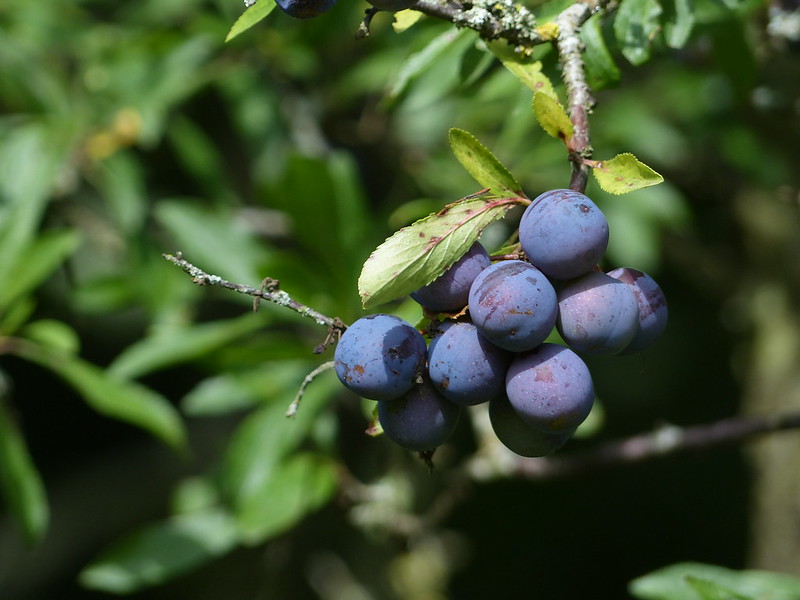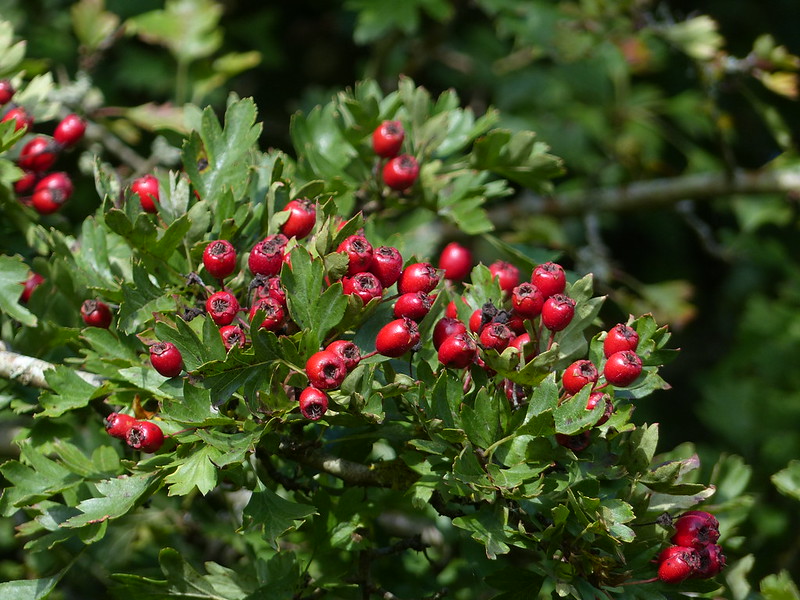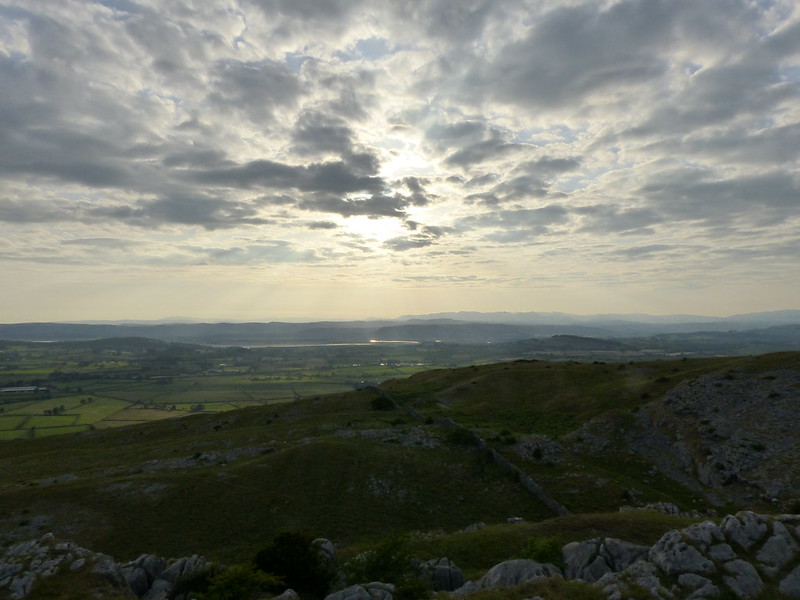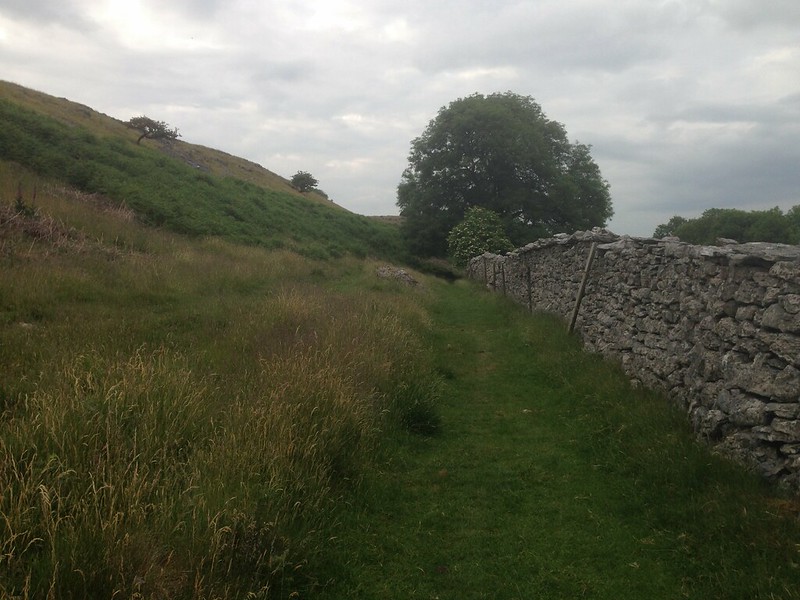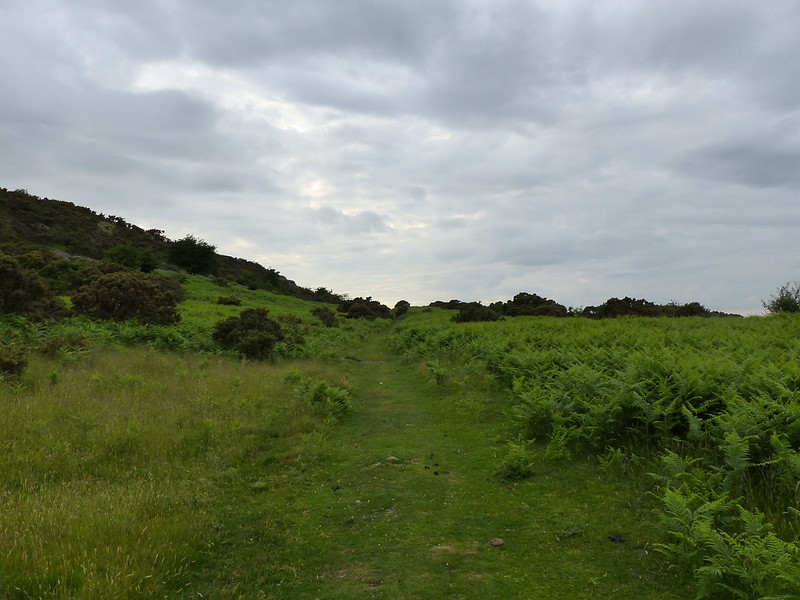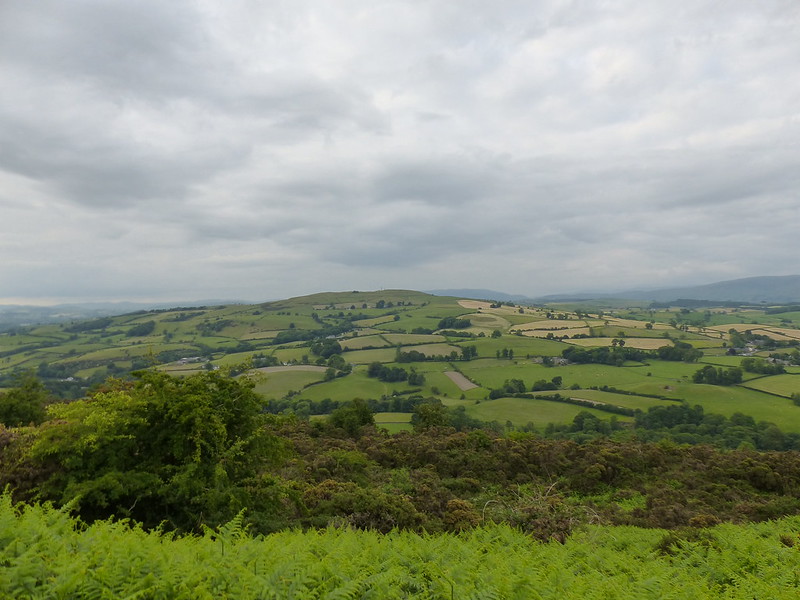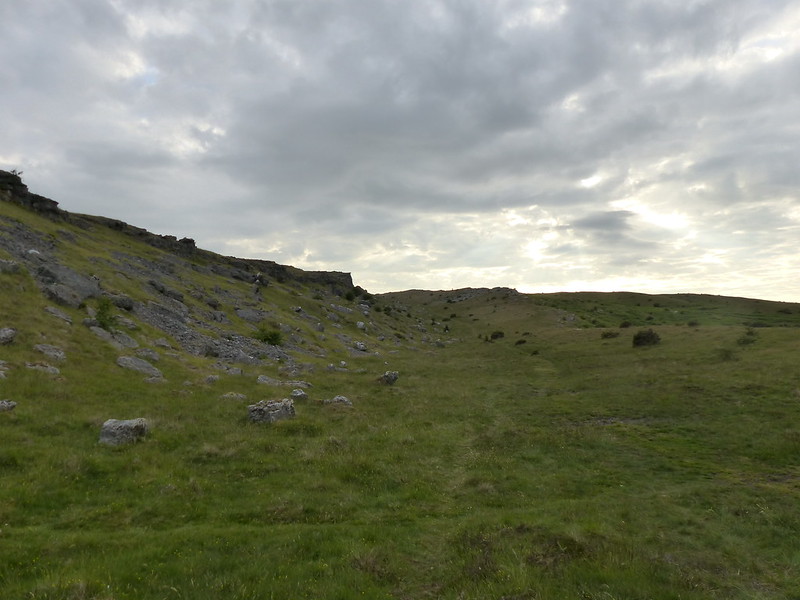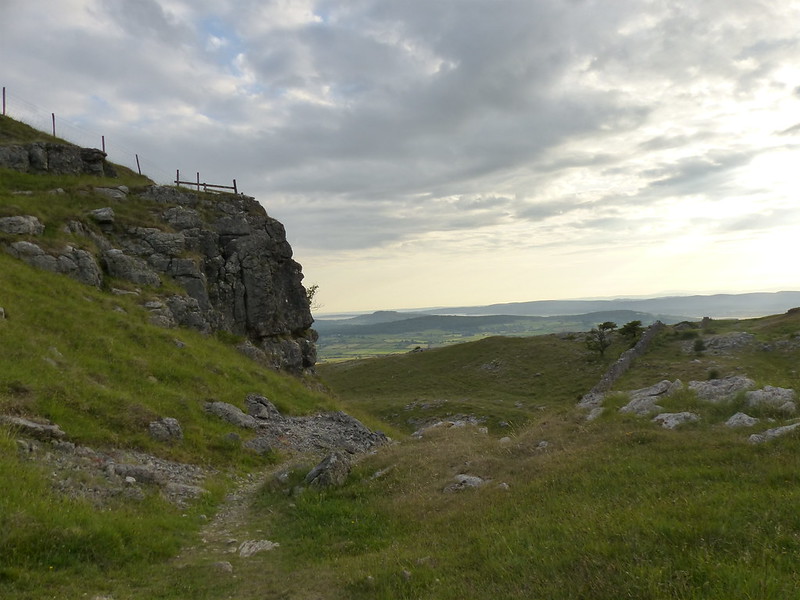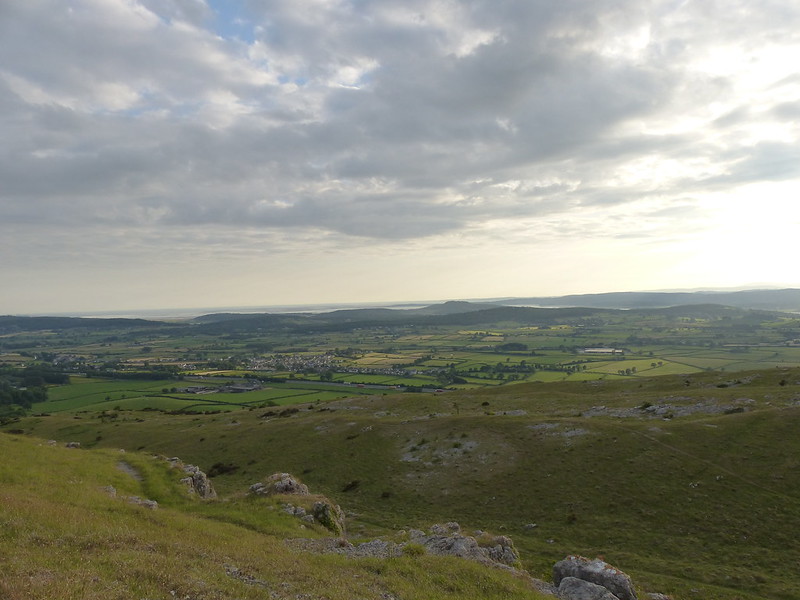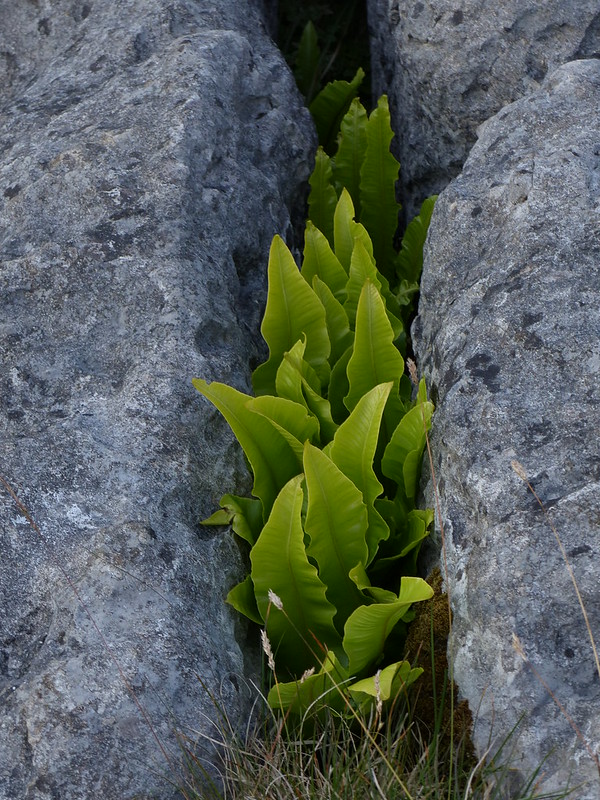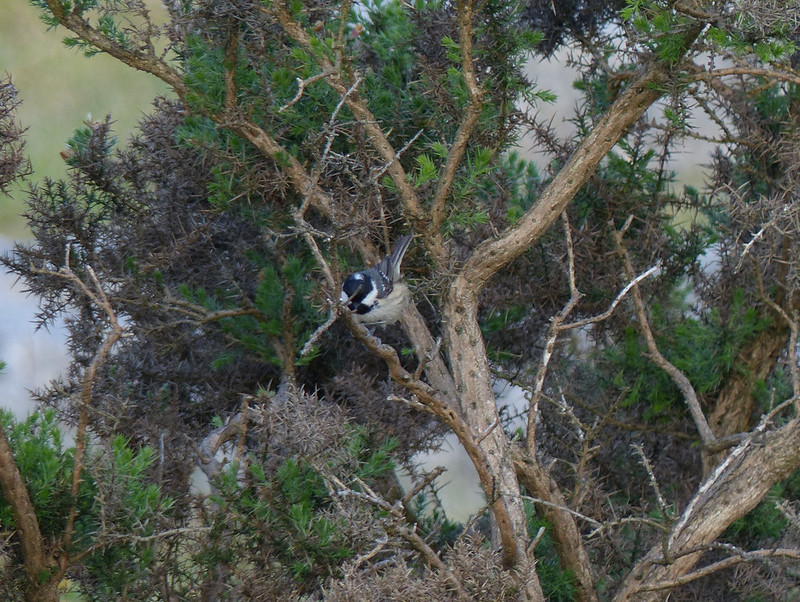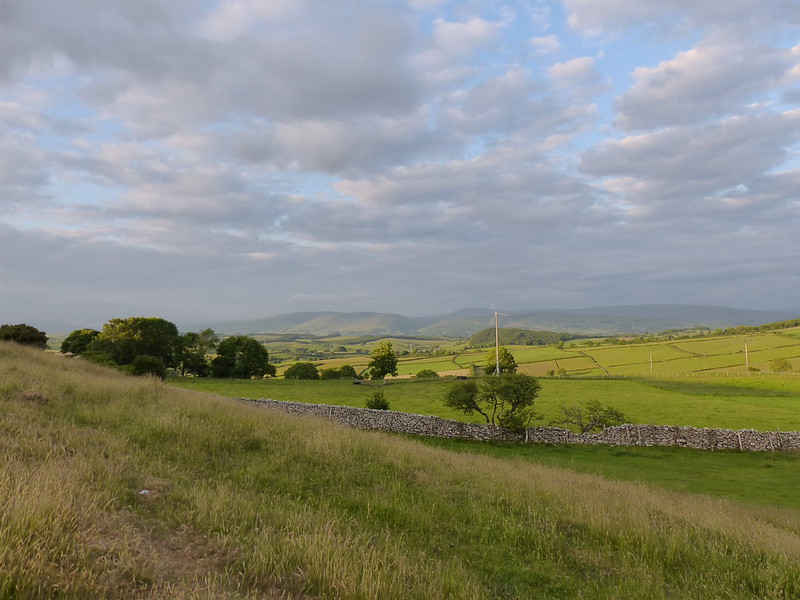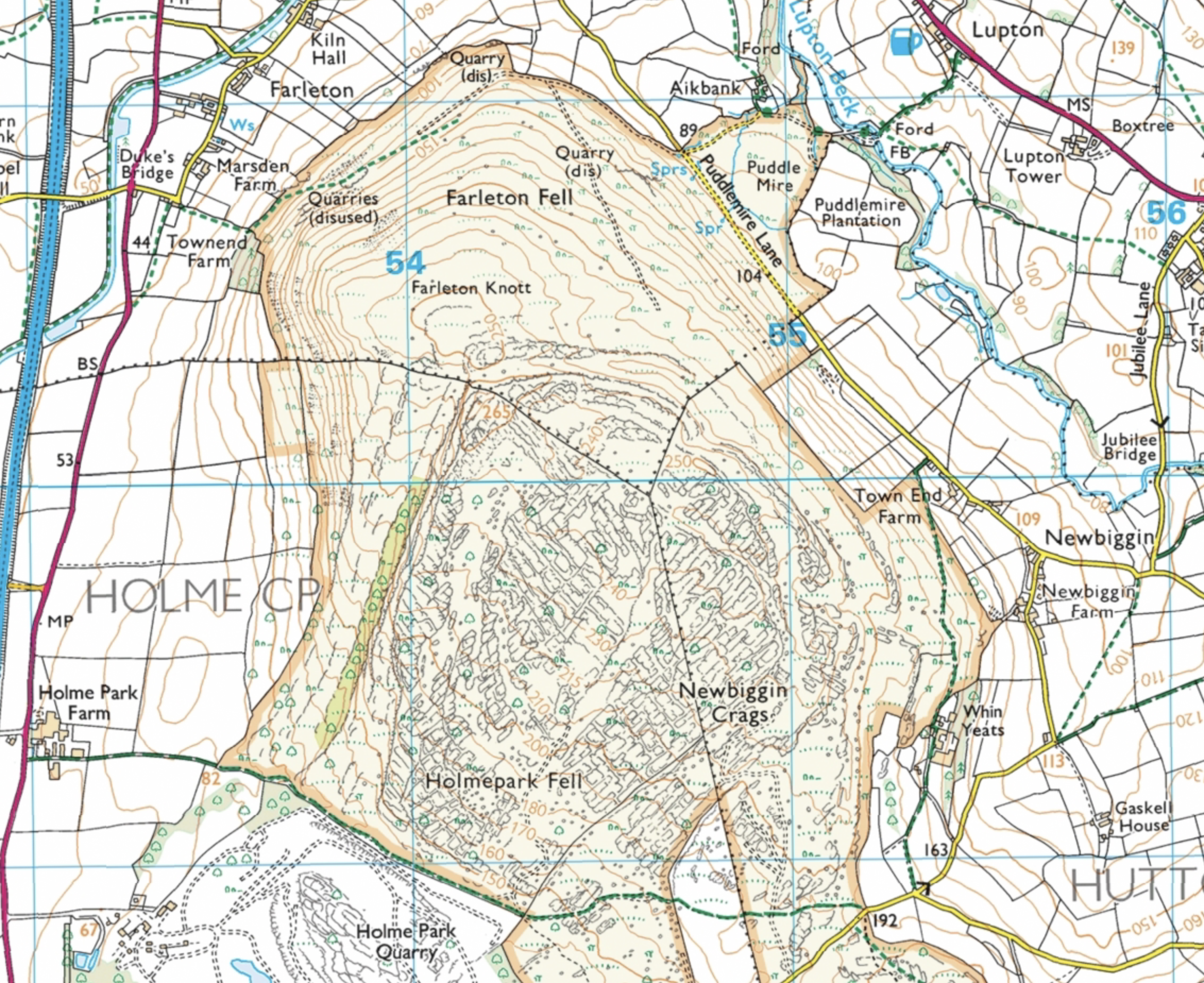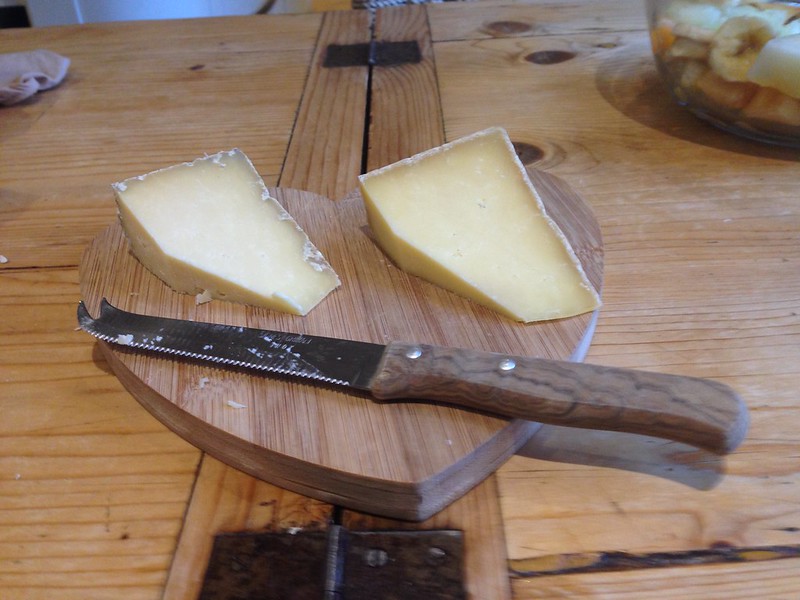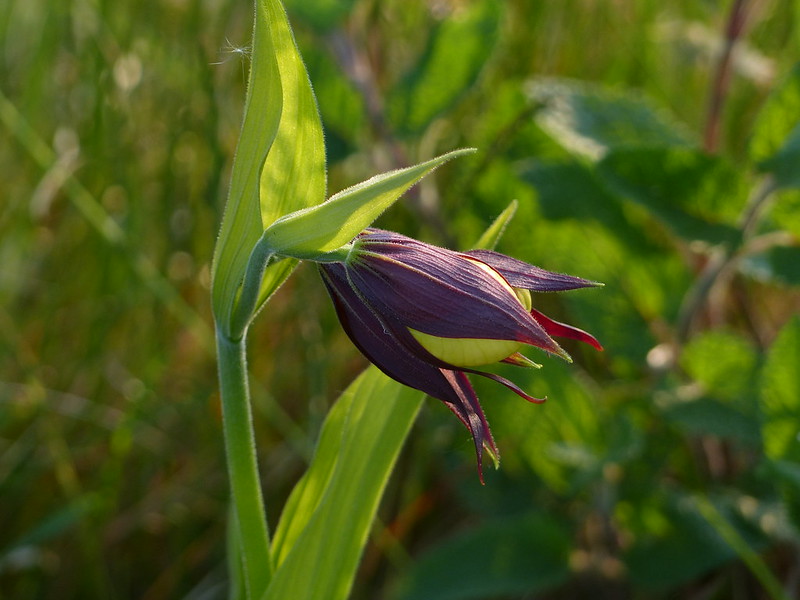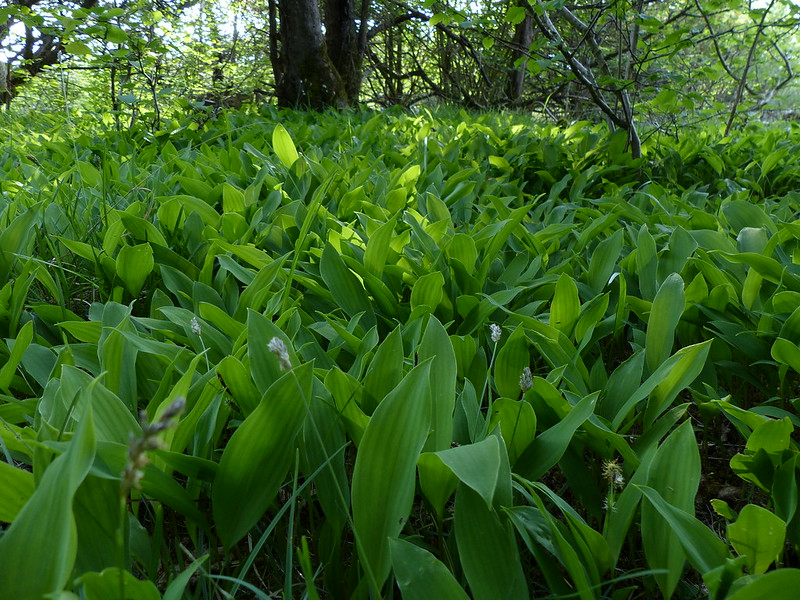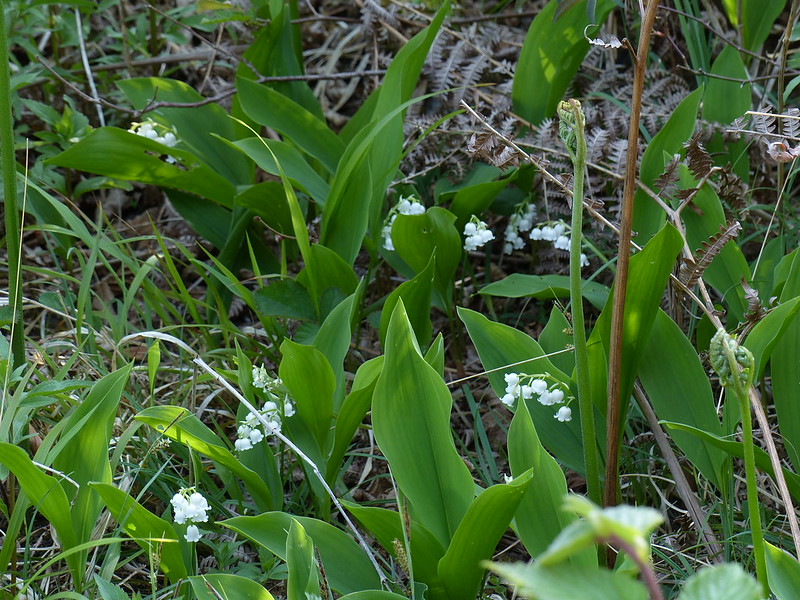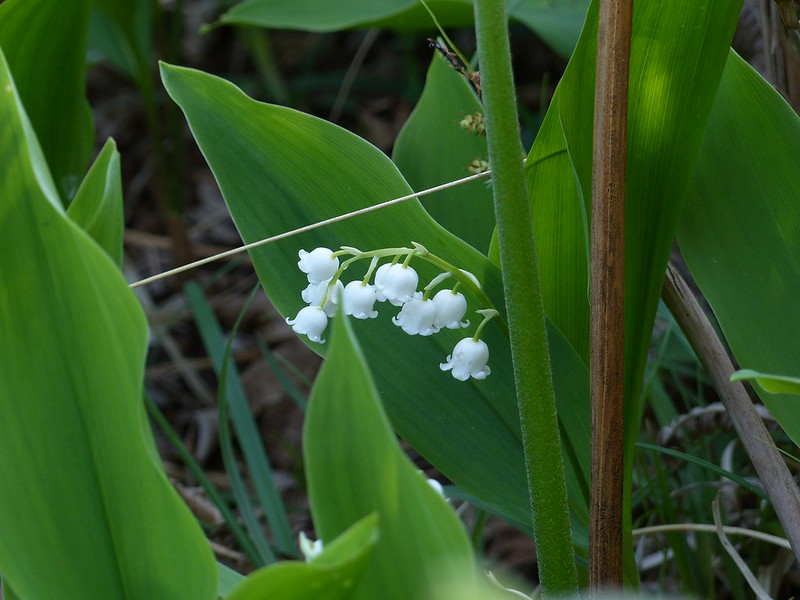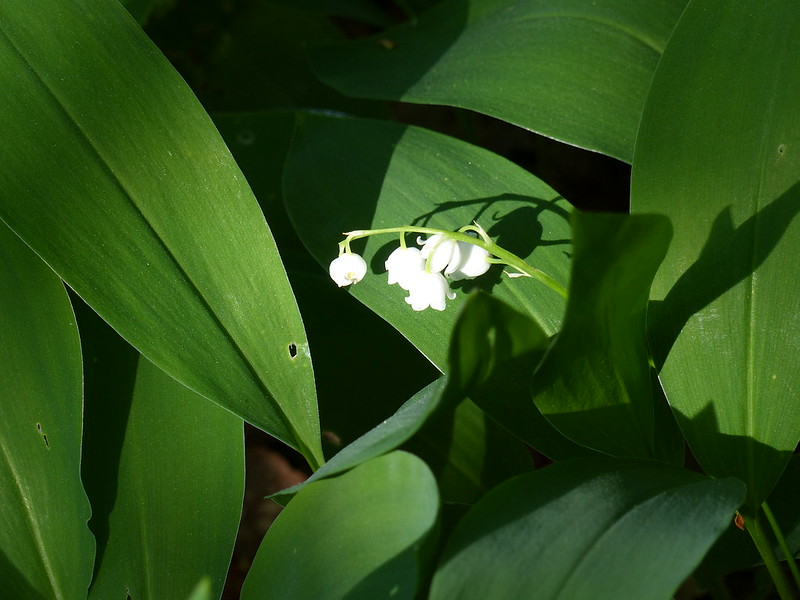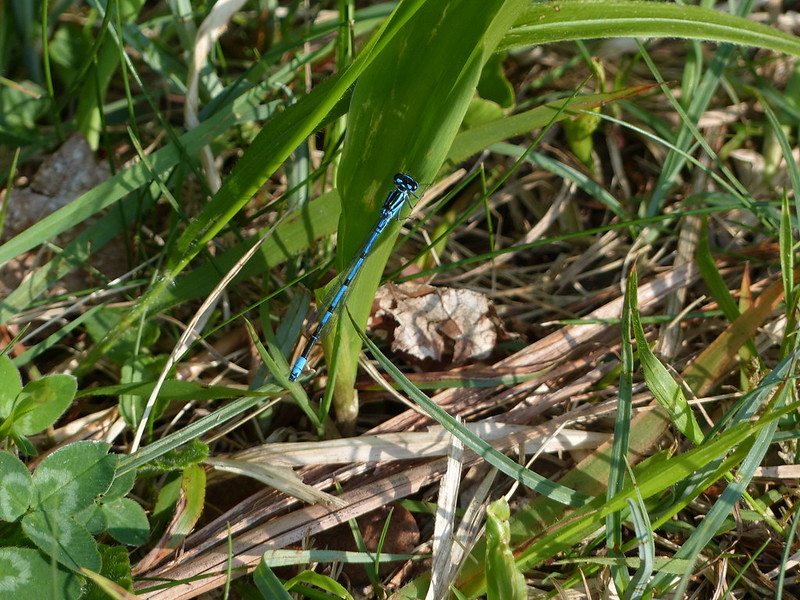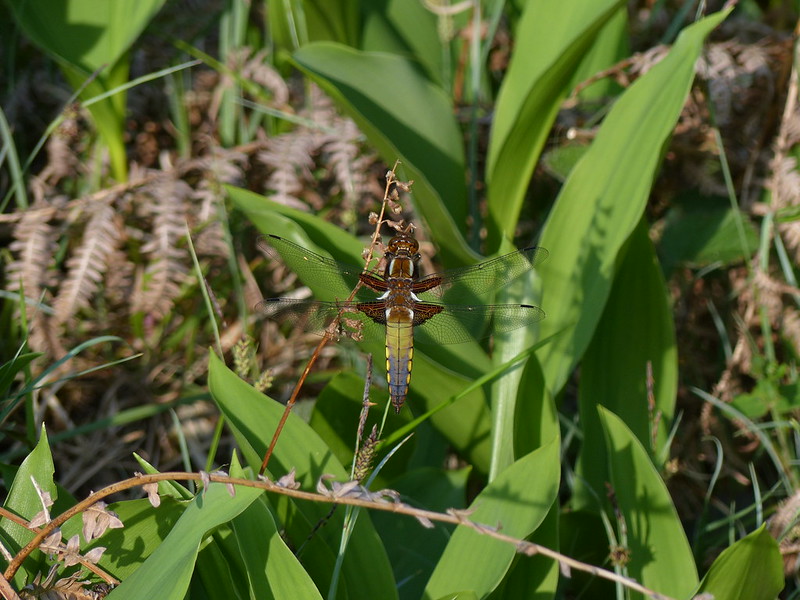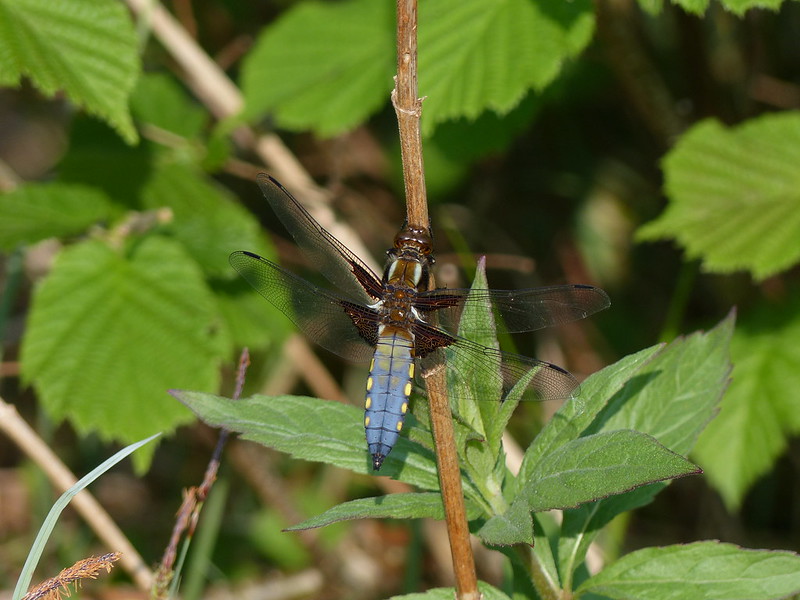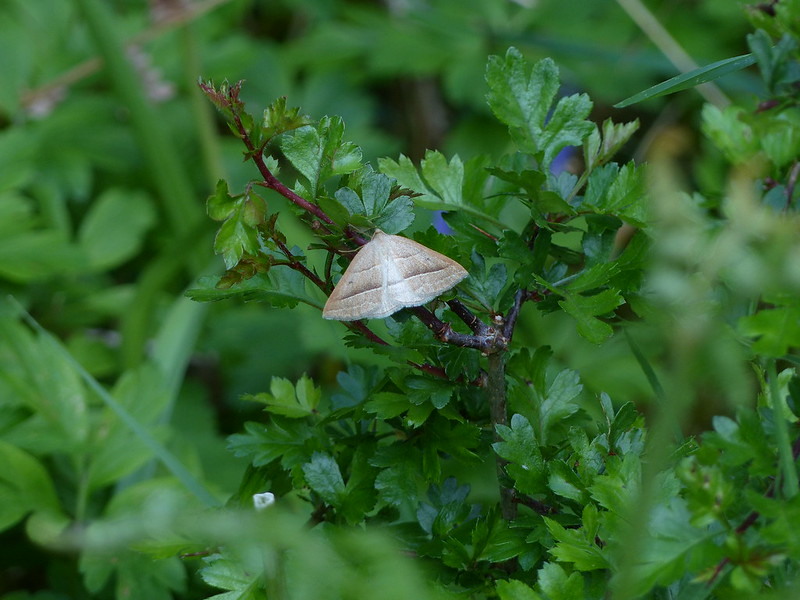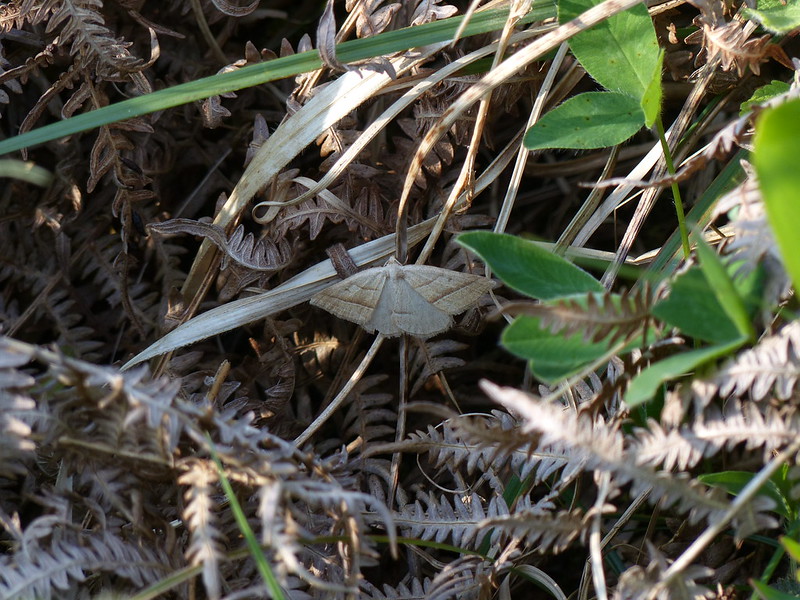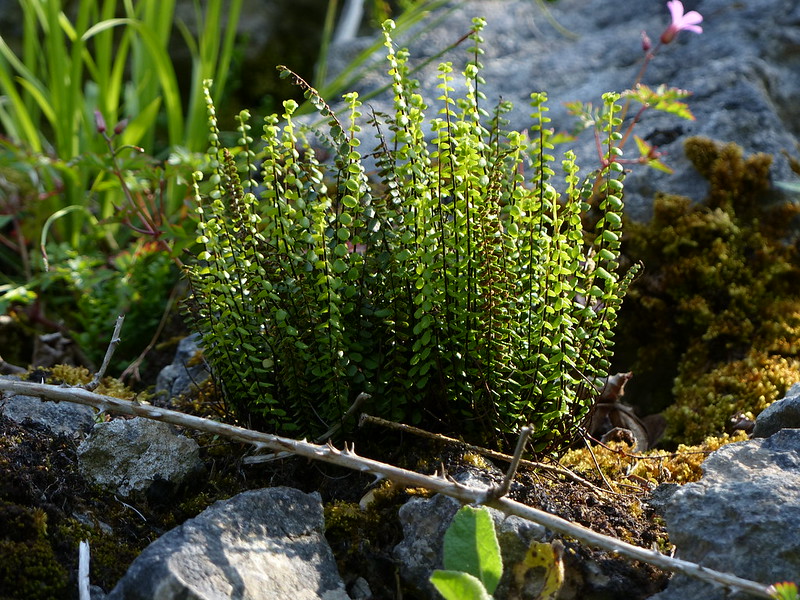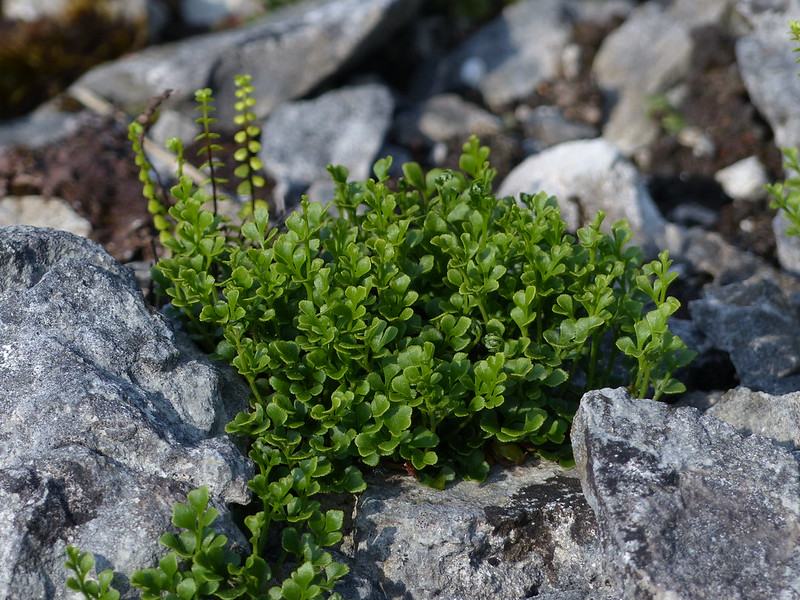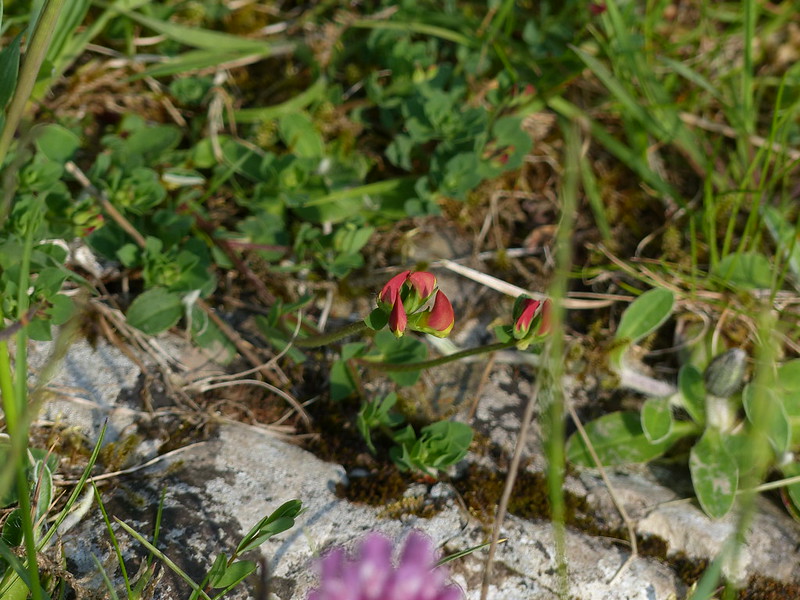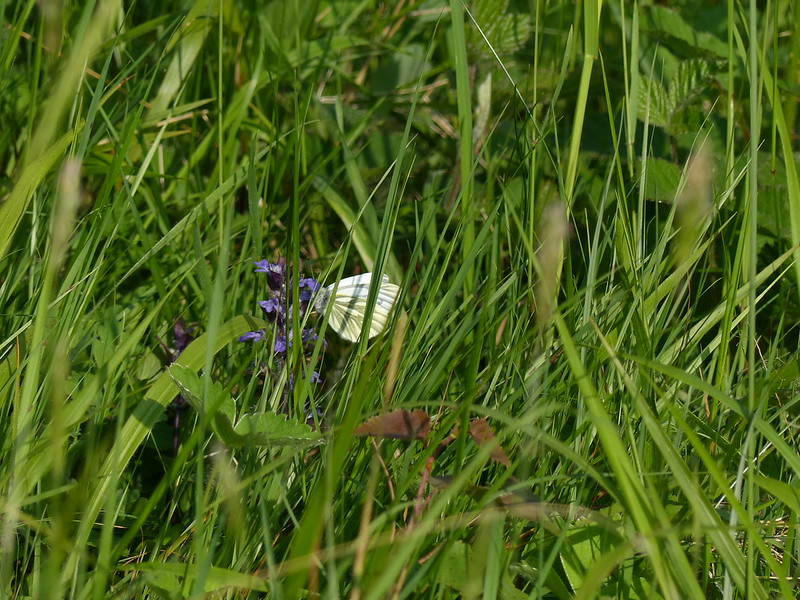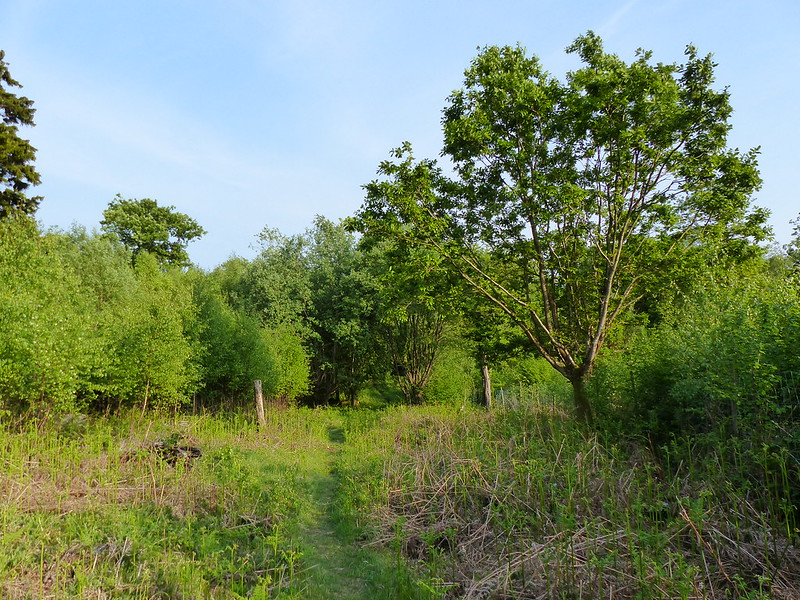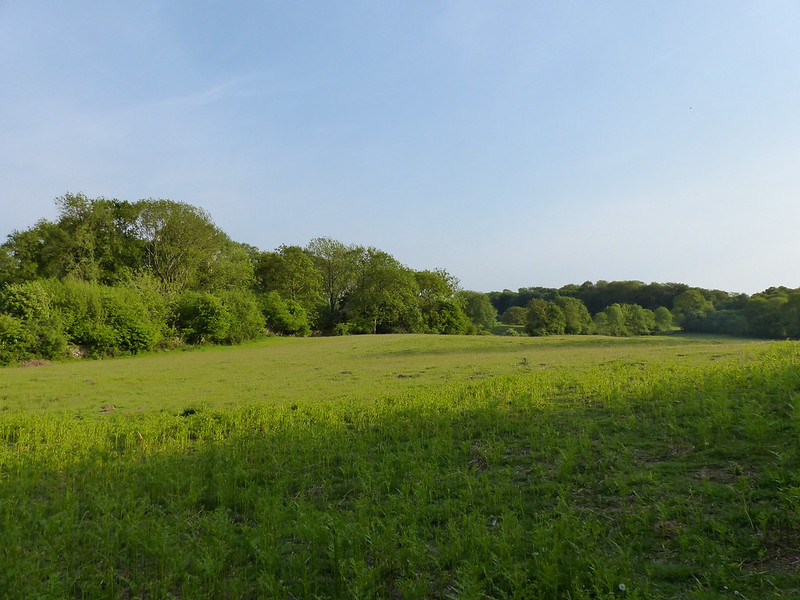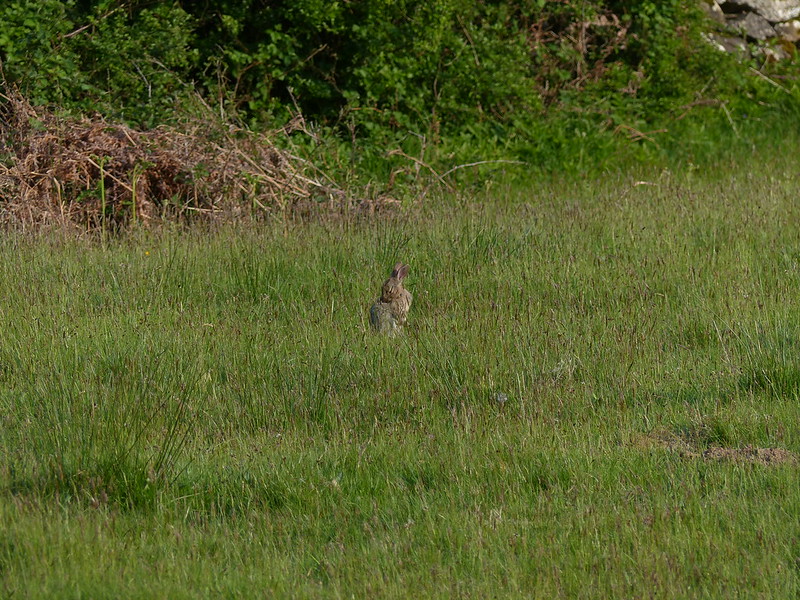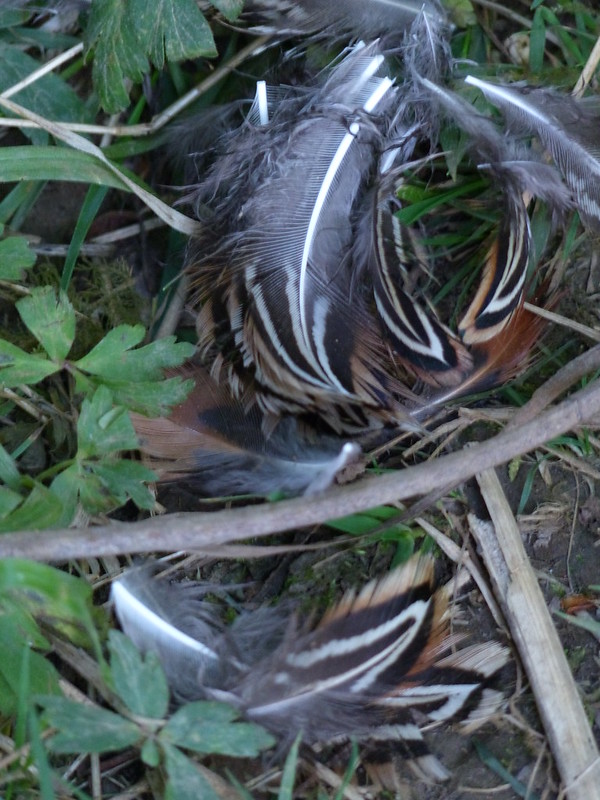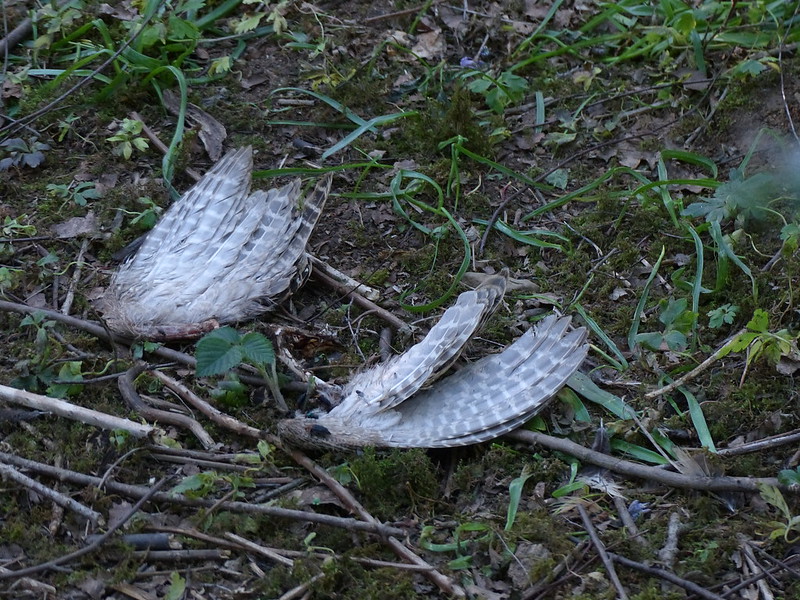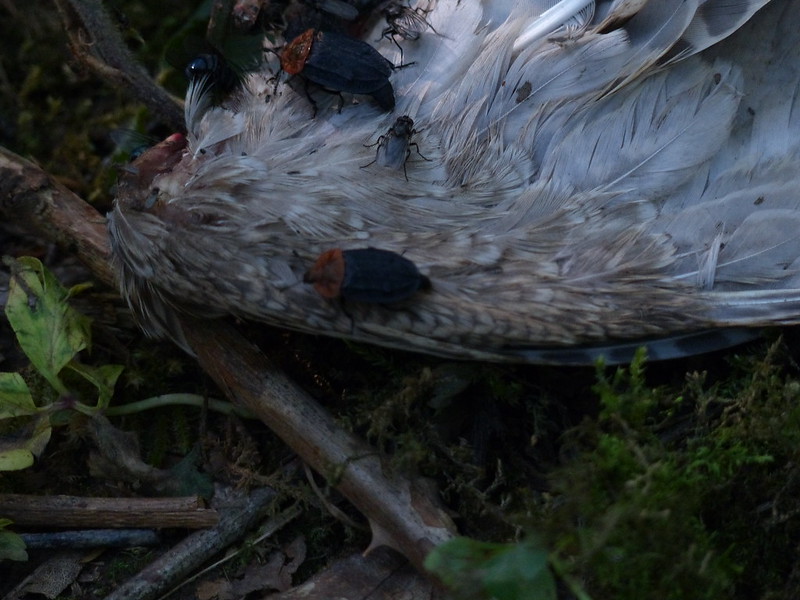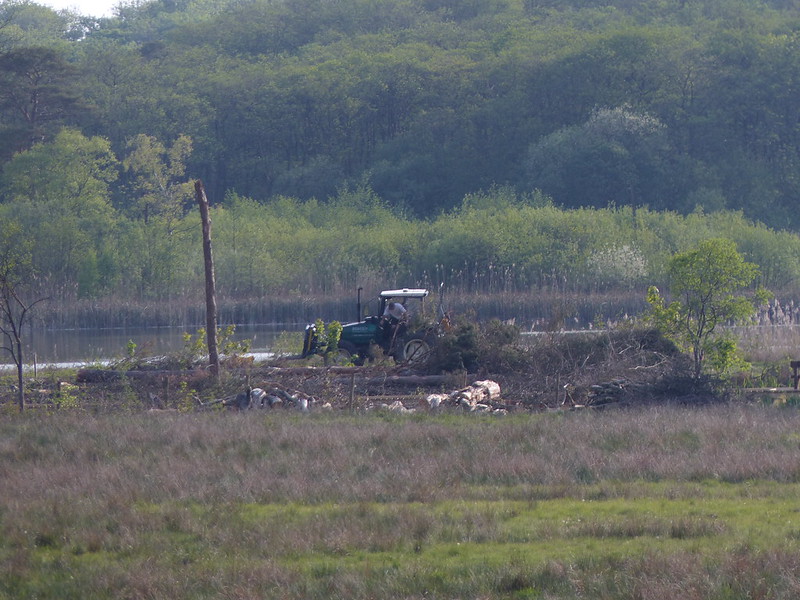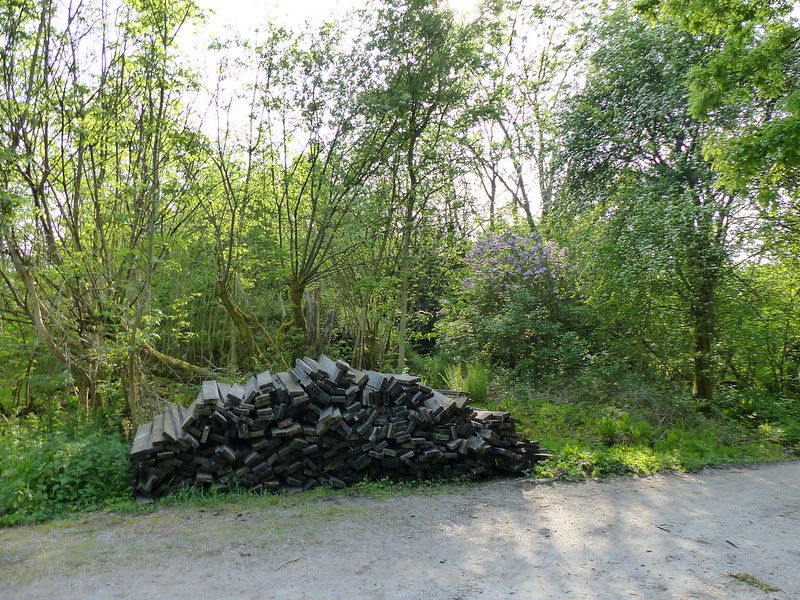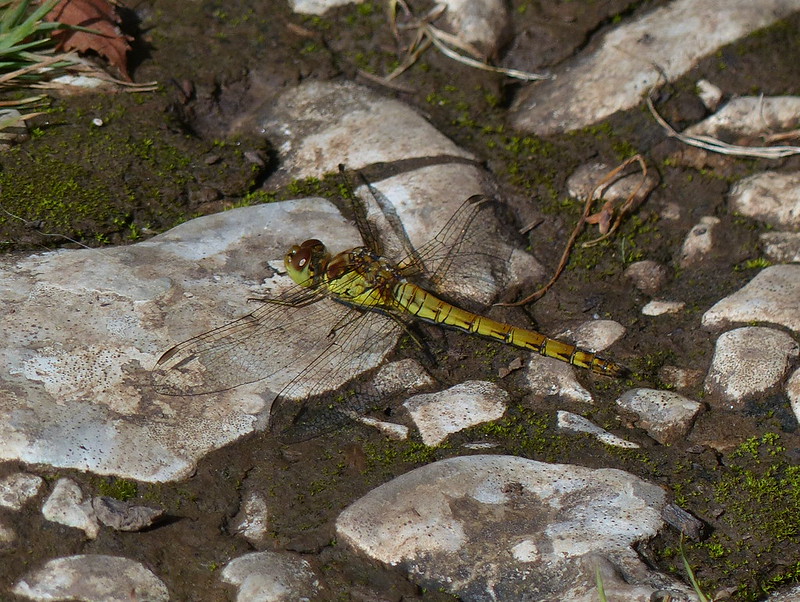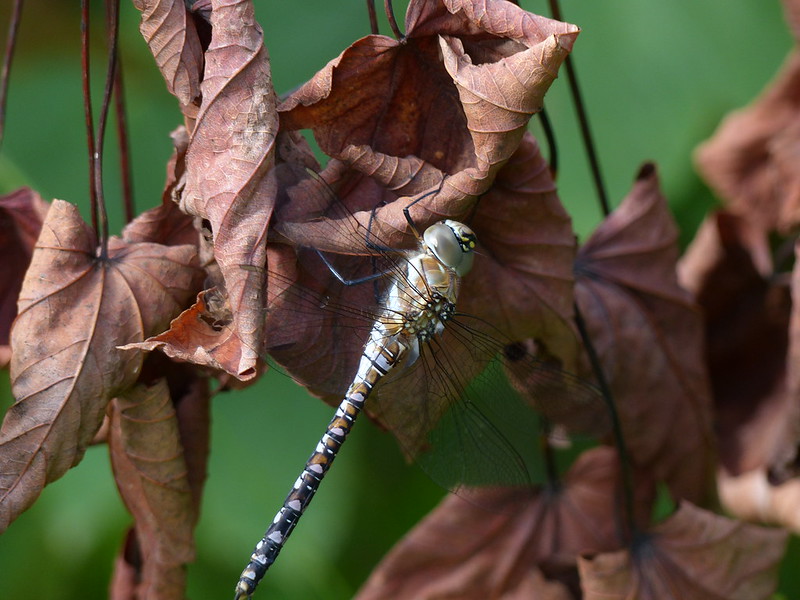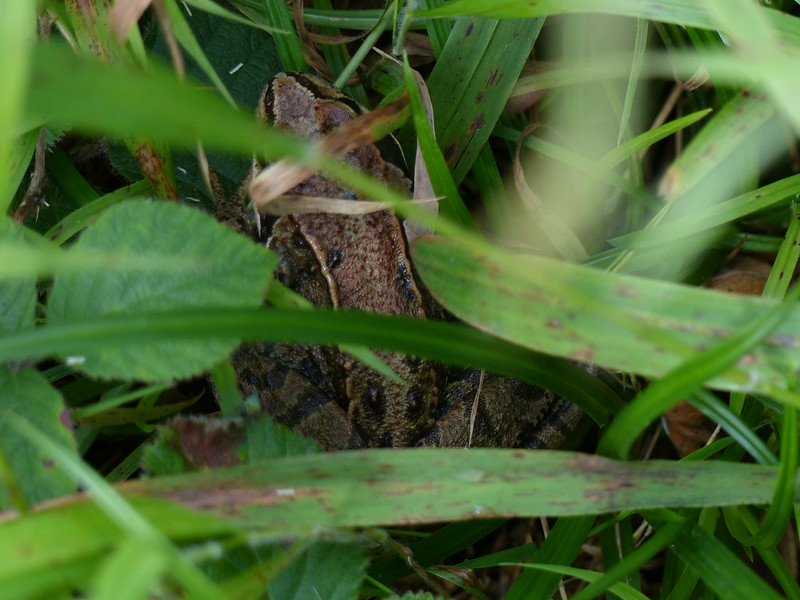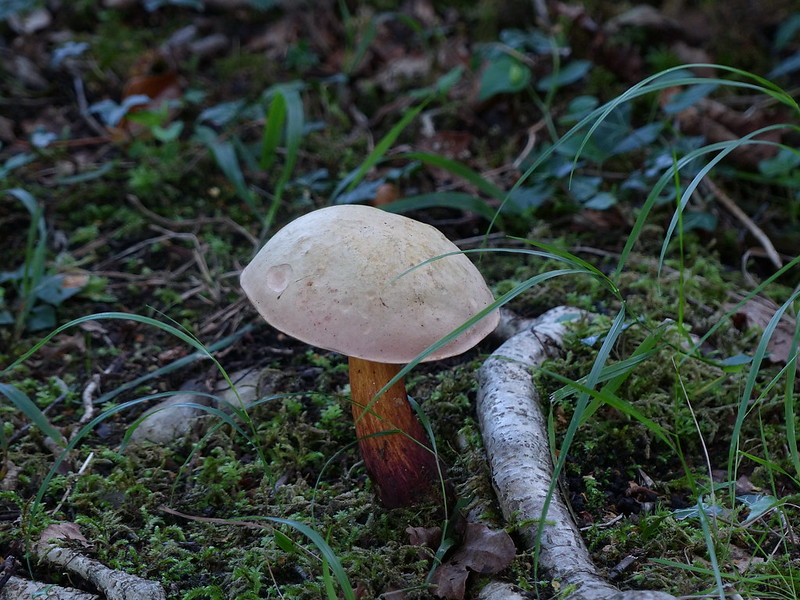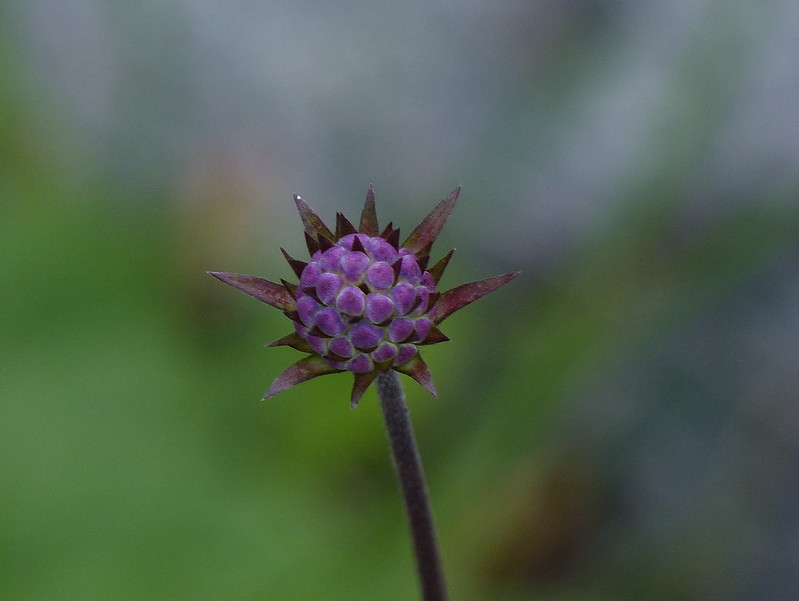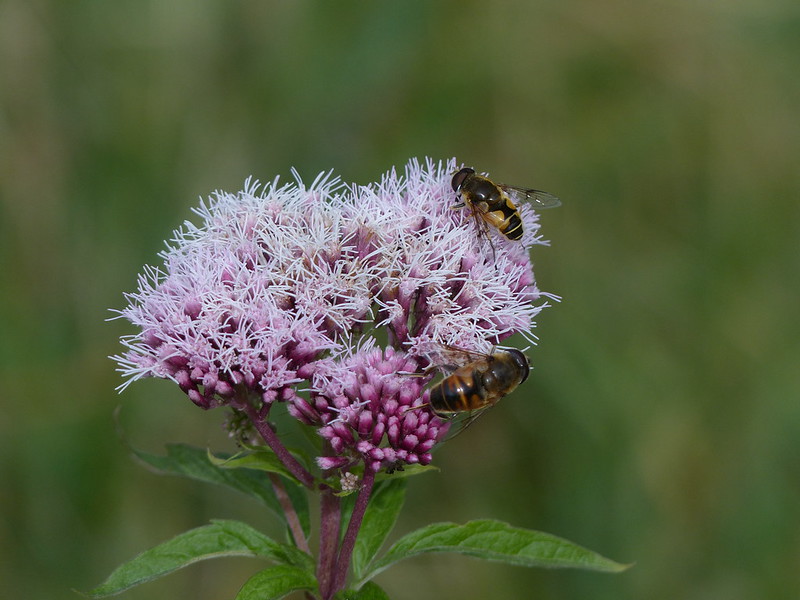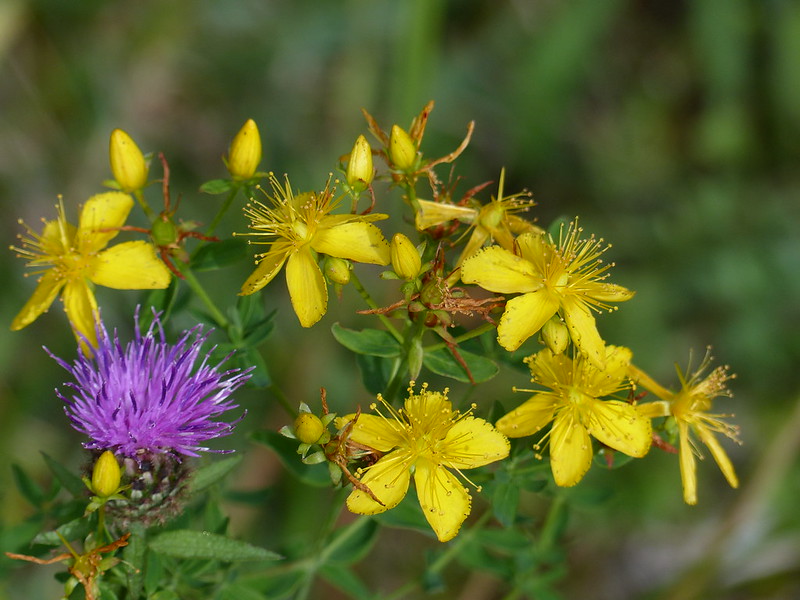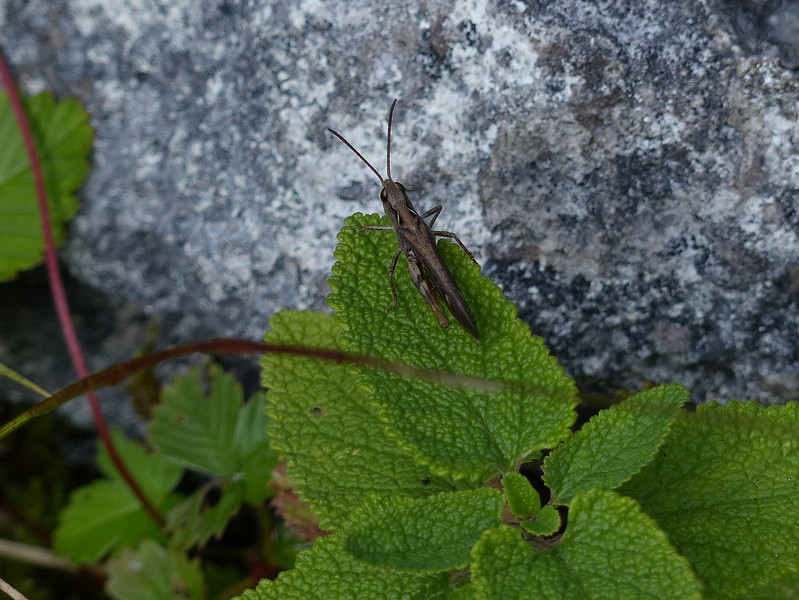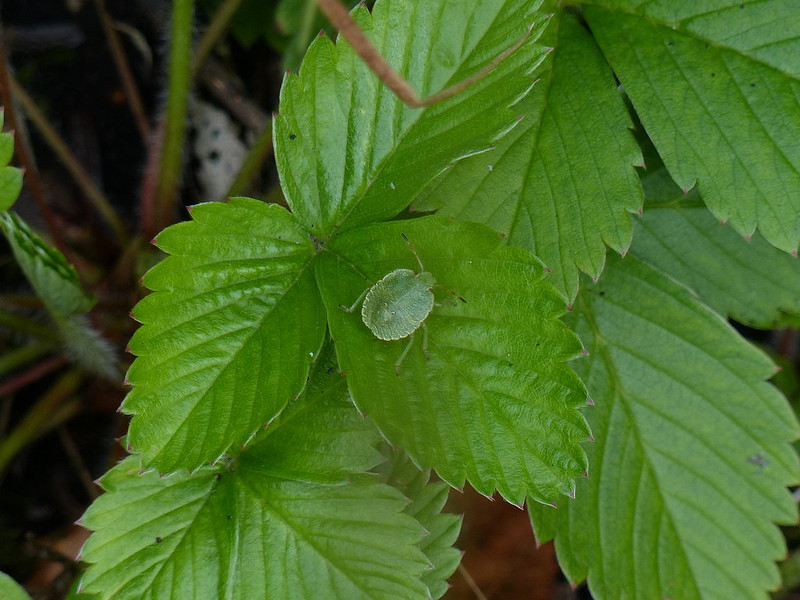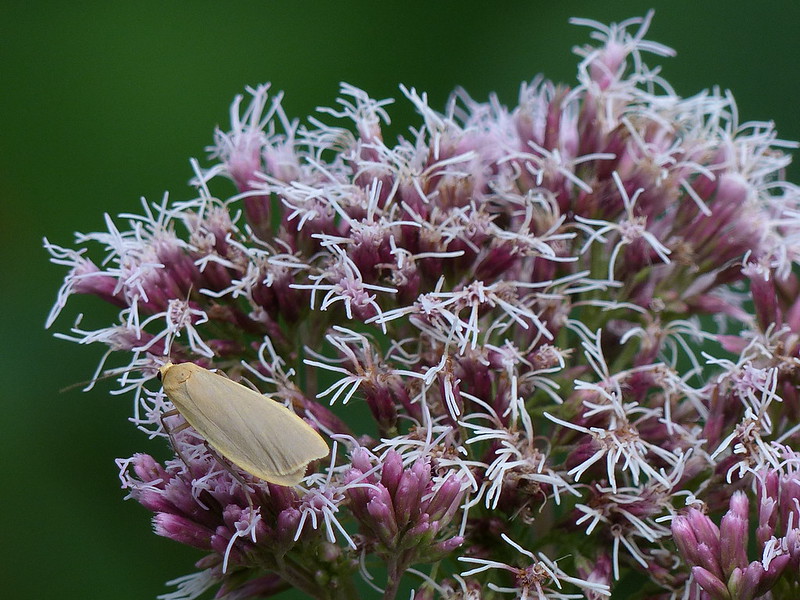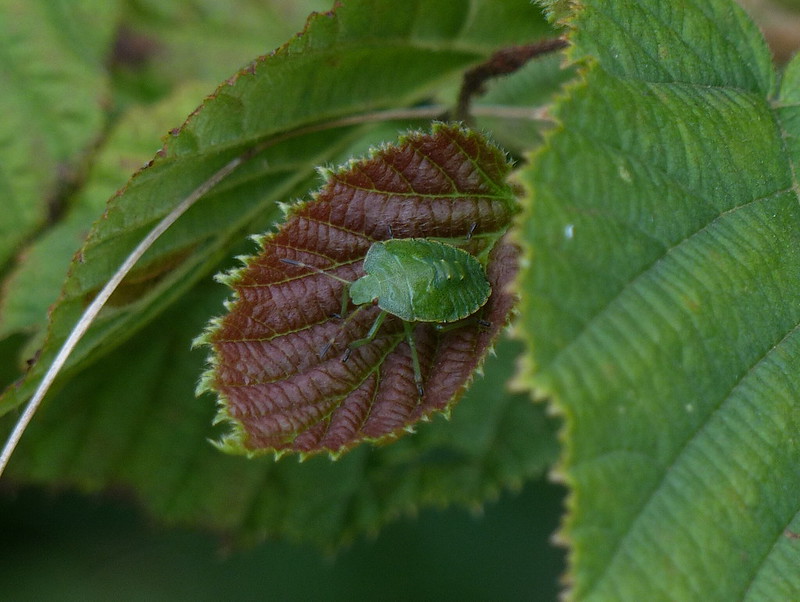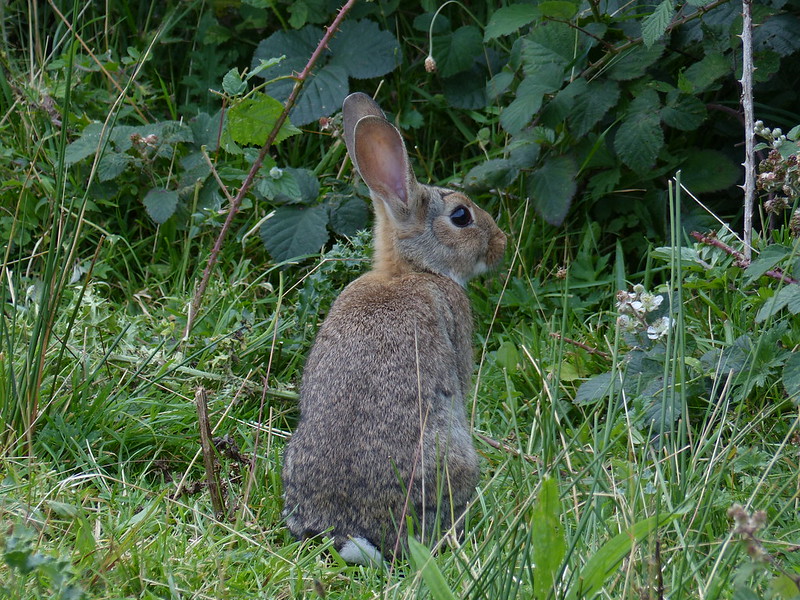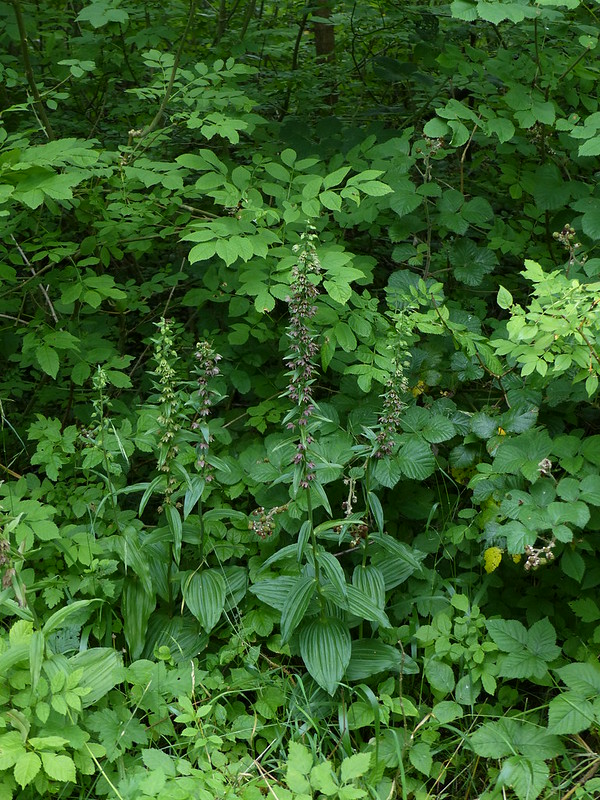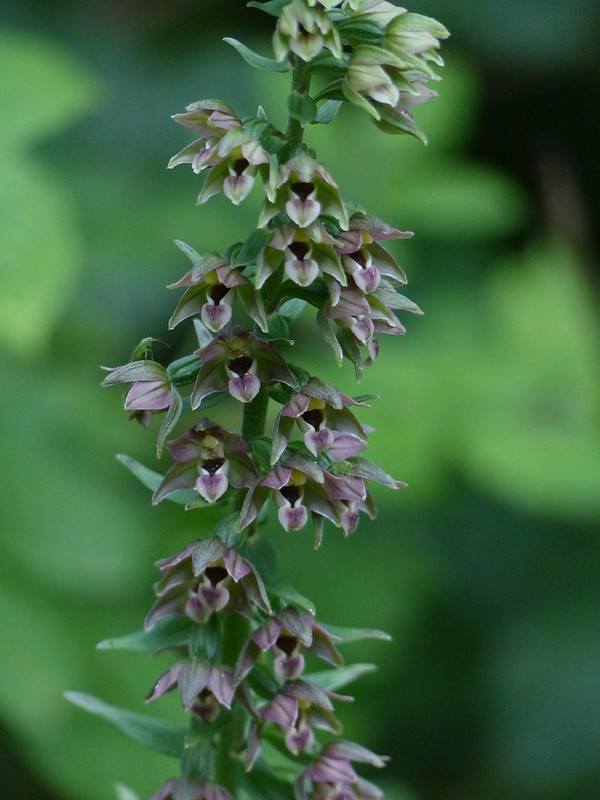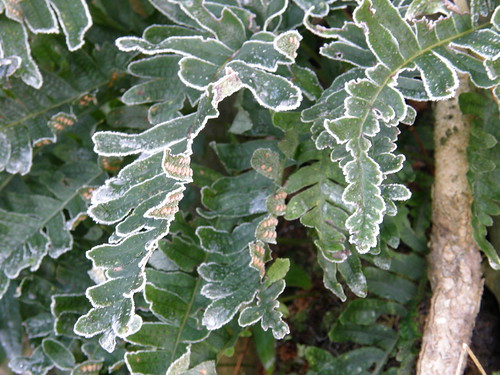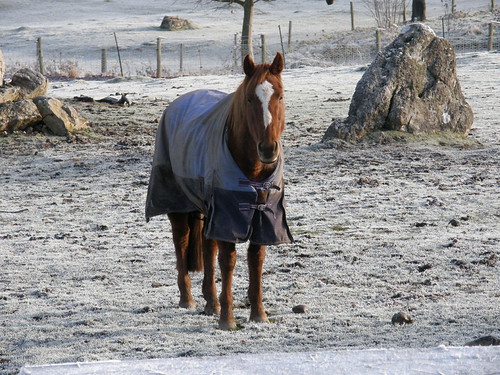
Thursday afternoon – blue skies and sunshine naturally. Once again I was walking home from Carnforth. This time I decided to stop to look at the churchyard at Saint Oswald’s in Warton, inspired by Francesca Greenoak and the flower dappled churchyard at Holy Trinity in Seathwaite. Sadly at Saint Oswald’s all is carefully manicured lawns – not much scope for wildflowers here. The churchyard is very large – not too surprising when you realise that historically Warton was a huge parish incorporating Silverdale, the Yealands and several other villages. Since the grounds were a little disappointing I popped into the church itself…

Apparently there may have been a church here since before the Norman conquest and the oldest part of the current building is 14th Century. The Stars and Stripes hangs alongside the Union Jack inside the church, sent by American servicemen after WW2 due to Warton’s connection to the ancestors of George Washington, also celebrated in the name of one of the village’s pubs…

On this occasion I wasn’t tarrying for a pint however: too much to see. Behind the pub the crag road climbs steeply and a little way up that road is a small car park, the back wall of which is liberally festooned with red valerian…

..which confusingly, can also be white…

..an introduced species from the Mediterranean which is obviously very happy on these limestone cliffs.
I feel like I’ve turned something of a corner when it comes to identifying flowers – although I haven’t entirely got the hang of using the keys I have at least learned to look at the entire plant and I’m beginning to pick up on familial traits which give useful clues. I’m far from expert, but I’m getting better.
With grasses etc. I’m not even sure that I’ve made it to square one yet.

Could this be red fescue? Gettin to grips with grasses, sedges and ferns etc. is bound to be a steep learning curve, but I know that I shall enjoy looking. Already I’m quite taken aback by the huge variety I’ve discovered since I began to take more careful note.
Meanwhile the large clumps of biting stonecrop which I noticed on a previous Thursday afternoon’s Shank’s Pony commute…

…have begun to flower…


Across Carnforth to Clougha Pike – must get back there sometime.
When I found these…

….before on Heald Brow, I tentatively identified them as quaking grass. I’m feeling much more confident now. After all the inflorescence (ooh I know – get me) is…
Inflorescence a pyramidal panicle, with very distinctive ovoid to broadly triangular spikelets 4 – 12mm, usually purplish, shaking in the wind on slender stalks *
They’re certainly very distinctive and rather handsome too.

Here on the crag they were plentiful too and since I first saw them they have grown and spread out like a child’s mobile so that they really do quake in the breeze. Quite hard to catch on camera the overall effect…

Of course, having boasted about my abilities as a plant identifier, I can’t trace this large and very vigorous one…

…which looks like it may be about to flower…

…so hopefully I can come back again soon and get some more clues. (The keys led me to a couple of plants neither of which quite seemed to match, but we shall see…)
No keys needed for red clover…



….I just enjoyed these three flowers, all on the same plant and seeming to offer an opportunity for a sort of faked time-lapse sequence.
I saw a number of butterflies and some damselflies but none would cooperate by sitting still for a photo. I chased one orange butterfly – some sort of fritillary I hoped, and when I lost it, noticed this large egg-shell down in the grass.

I thought that this might be flea sedge….

…but I searched for images and now I’m not at all convinced.

These tiny flowers are a bedstraw, but hard to decide which one. Heath bedstraw looks favourite except that it favours acid soils.
This had been one of my slower ascents of Warton Crag. Once over the top I was into the woods and the vegetation changed.
In the shade under the canopy, there’s lots of this…

..which I think is male fern…

This is black bryony…

…which is dioecious (ie male and female flowers on different plants) , apparently related to the yam, although you wouldn’t want to eat it – the berries it produces are poisonous (other parts of the plant can apparently be safely eaten after cooking but would you want to risk it?) According to Gabrielle Hatfield** it has several uses in folk medicine including the treatment of bruises, hence the French name ‘herbe aux femmes battues’ – the plant for battered wives.

Lakeland hills from Summer House Hill.
Walking down past Leighton Hall I was struck by a meadow blushed white by oxeye daisies….

On the opposite side of the driveway a similar effect was achieved by more daisies..

…a mayweed or a chamomile, but I couldn’t get the closer look needed to try what looks like the tricky task of deciding which this is.

Meadow vetchling.

So confident am I feeling, in fact, in my ability to chase down the identity of flowers that I thought I might even take on an umbellifer. How difficult could it be? The flowers seem quite distinctive…

And the pinnate leaves….
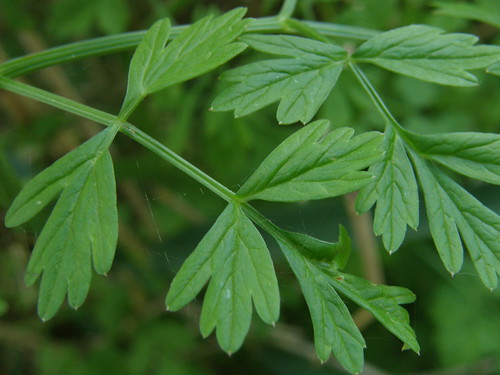
The stem is grooved. It’s growing in a damp spot on the edge of the causeway path across Leighton Moss. Easy surely?
Well…I’ve tussled with it for ages. It looks like wild celery. I quite like this idea – it would give me an opportunity to tell the story of the ‘ancient Incan’ herbal tea I was given in Peru when I went down with Cuzco tummy, which it transpired was made by steeping celery leaves in hot water. Made me feel much better though. But…if this is wild celery then why can’t I find a picture of wild celery anywhere which shows these striking red stamens?

Because it isn’t wild celery at all, it’s Hemlock Water-dropwort. You wouldn’t be well advised to be drinking a tea made by steeping these leaves in hot water. You might find yourself with a ‘dead tongue’ which is an old Cumbrian name for this plant. Or you might just find yourself dead, since this is one of Britain’s most poisonous plants.

There were several of these along the causeway too. If I had needed any convincing about ‘The Wild Flower Key’ after Sheila’s recommendation, I need only have flicked through the few pages on orchids, which I have just done – and now I can pronounce with confidence, rather than my usual bemused confusion, that these are common spotted orchid.


Reed-bed view.
I listened for quite some time to a warbler (I like to think sedge warbler but I know I’m only kidding myself when I think that I can tell the difference.) and was charmed again by a family of long-tailed tits chattering and hopping about in the alders on either side of the path. One of the marsh harrier was circling overhead. Generally they fly quite low over the reed-beds, but this was much higher than usual. Also it was calling, which I’ve never heard before, a rather plaintive cry.

I’ve written before about the wonderful spiral patterns in the centre of oxeye daisies. On this occasion paying attention to the daisies yielded additional rewards…

I think that this is a honey bee. If you look at the wings you can see a long thin cell on the outside edge, a marginal cell, which almost extends as far as the wing-tip and then three sub-marginal cells next to that which apparently is characteristic of honey bees.

Frustratingly, I can’t find this natty pin-striped hover fly in my book. Ferdinandea cuprea has grey and black stripes on the thorax but a bronze abdomen whereas through the wings this seems to have stripes. Another hover fly rhingia campestris has a prominent snout, which this seems to have, but also a very striking orange abdomen. No mention is made in the description of either of banded legs. I shall call him Malvolio, for now at least, because he is cross-gartered and yellow-stockinged.
Where the causeway crosses a bridge and the view opens-out because there’s a gap in the reed-bed, I’ve learned to approach slowly and cautiously because that way there is often something interesting to see.

There were three red deer hinds in all. Unlike last time that I saw deer at close range here, the deer soon turned and disappeared into the reeds.


Even if there’s no wildlife to see, the view is special in itself.

This tall plant with flowers hidden behind it’s own long and abundant stamens is common meadow-rue.

I’ve drawn a blank with this too. It’s quite small, sitting on an alder leaf. I thought maybe a wasp, but I’ve got no further than that.

Figwort.

Pleasantly red – no idea what it is.

Bittersweet flowers are tiny but very striking. This plant is related to the potato and the aubergine, but again the berries it produces are best avoided. They cause sickness rather than death.
The plant’s species name dulcamara, is derived from two Latin words meaning sweet and bitter.
Because of the presence of the toxic alkaloid solanine in the stem, leaves and berries, they taste bitter at first and then sweet.#


Could this be star sedge?

In the hedgerow, a vigorous climber covered in lots of unopened flowers like the one above, and some open flowers….

Tufted vetch.
Nearby…

..another purple vetch which I think is wood-bitter vetch.


This fern has grey-green patches where the leaves attach to the stem. Any ideas?

this apparently unperturbable bunny let me walk right up to it,

..and past…

..without ever being too distracted from the golf-course grass.

I noticed that many of the oxeye daisies I passed were infested with what I presume are aphids. Apparently there are around 550 British species, so I shall just content myself with ‘aphid’.
Whilst I was meandering home taking frivolous photos, the fields around the village were busy with the making of sileage…

* Guide to the Grasses, Sedges, Rushes and Ferns of Britain and Northern Europe by Fitter, Fitter and Farrer
**Hatfield’s Herbal by Gabrielle Hatfield
# Reader’s Digest Field Guide to the Wild Flowers of Britain
———————————————————————————————————————–
It’s all Andy’s fault.
He set me a quiz question and I enjoyed both answering it (even if I did have to cheat) and the discussion which followed.
So (and also by way of a trailer for the next post) how well do you know your Lake District?
Which valley are you in if you can see: Truss Gap, Seat Robert, Mosedale Beck Forces, Gouthercrag and Hobgrumble Gill?

